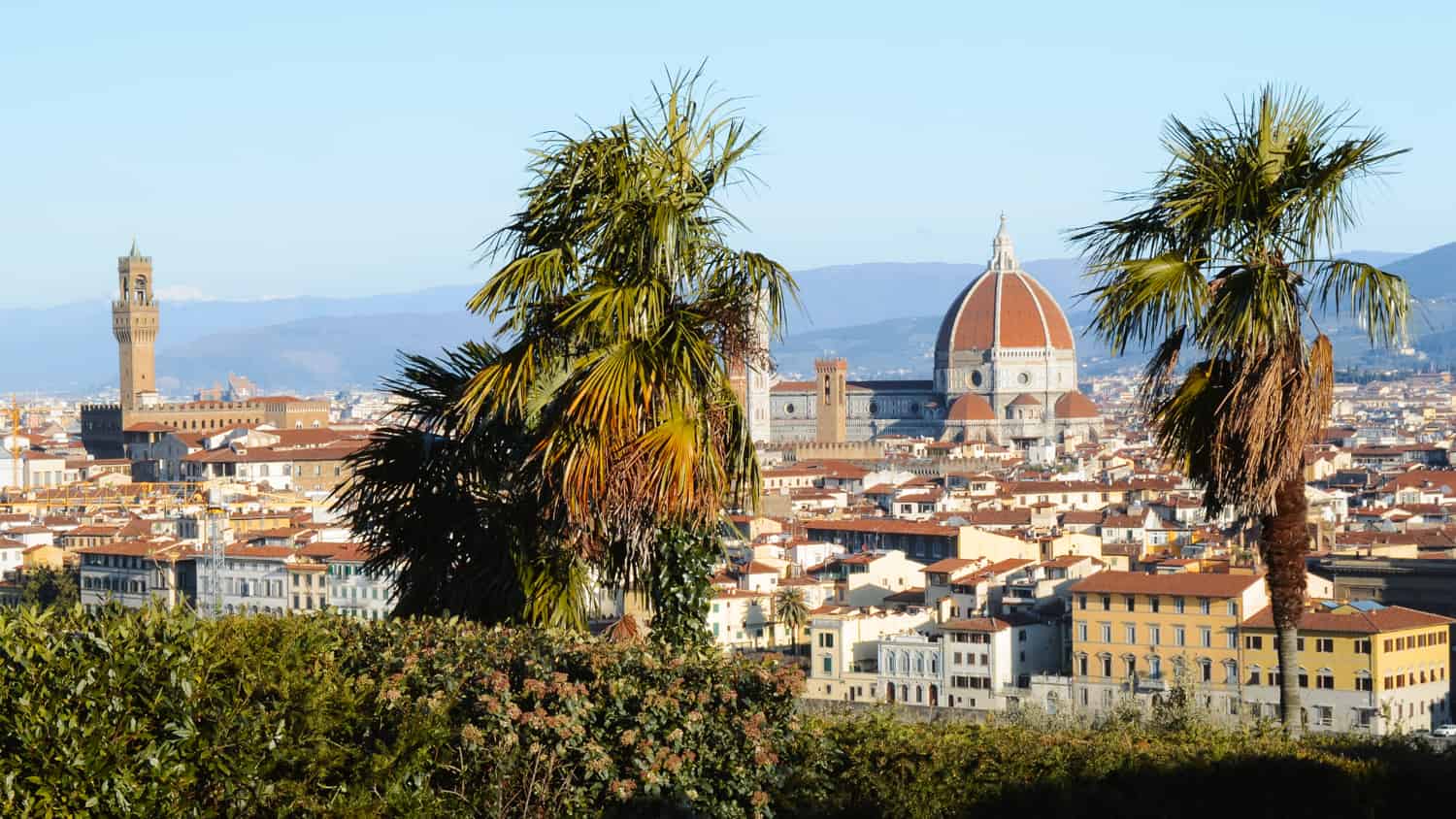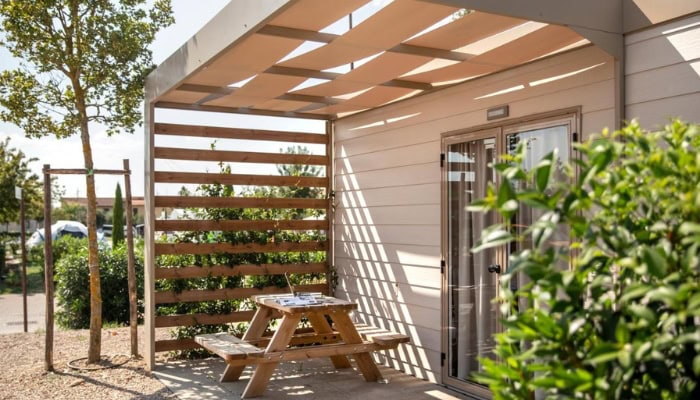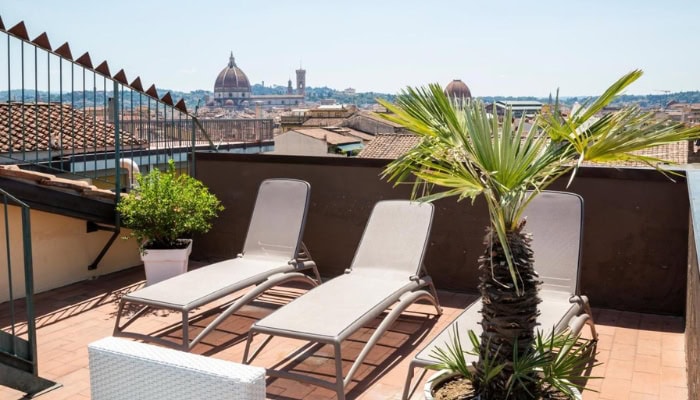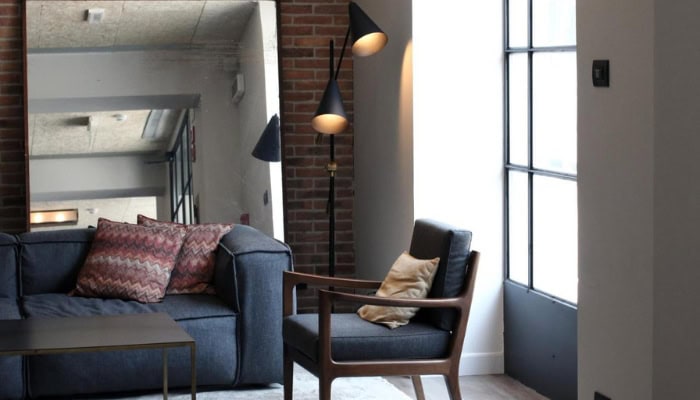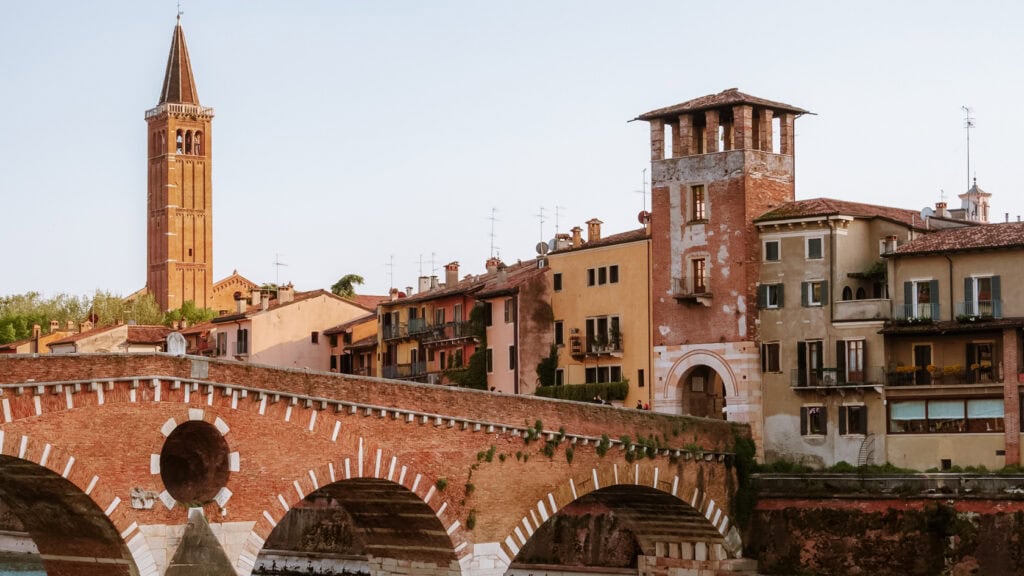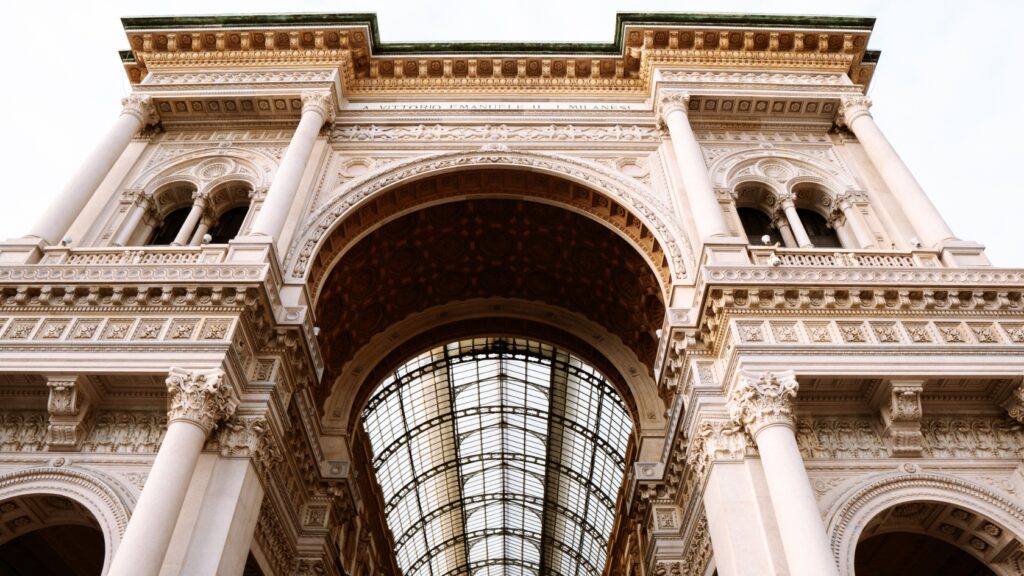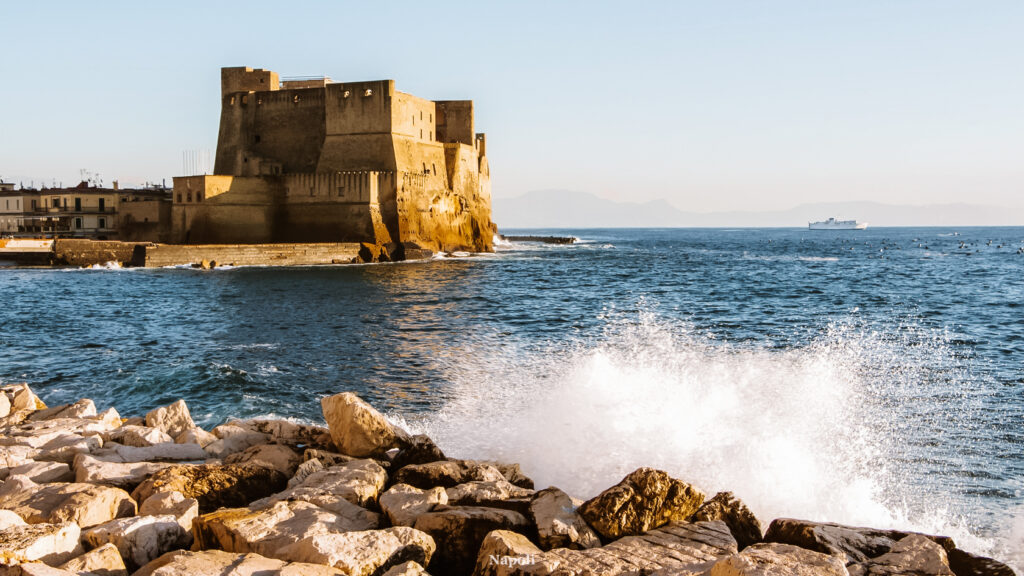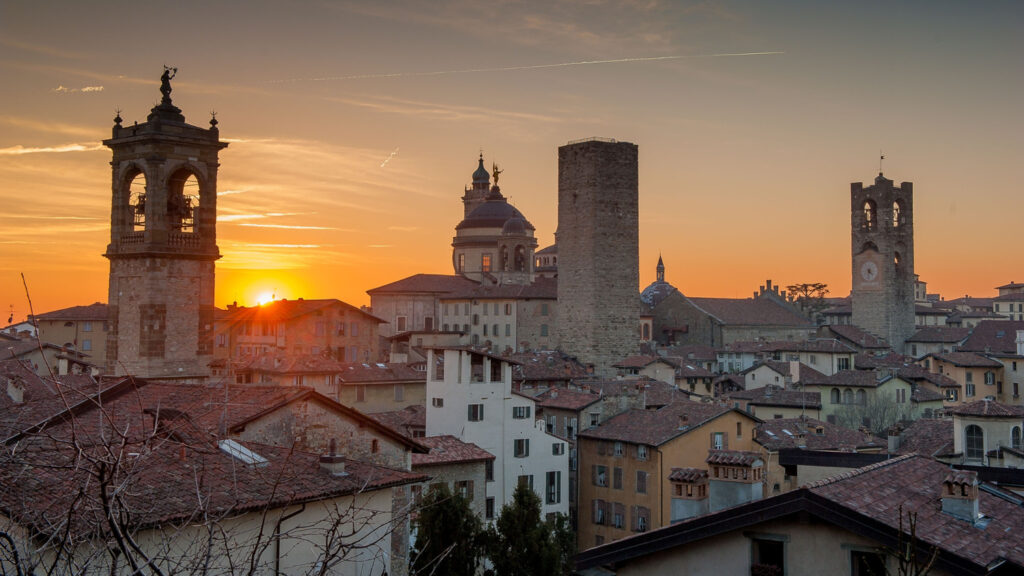Florence, with its skyline engraved with the majestic silhouette of the Duomo, artworks by Michelangelo, Botticelli and Leonardo da Vinci, and streets filled with the aromas and flavours of authentic Tuscan cuisine, is more than just a destination. Check out our guide with tips on things to do in Florence.
Today, we’ll take a look at the best places and sights to see and visit in Florence, Italy to build an itinerary for 1 or 2 days in Florence. We have also created an itinerary for 2 days in Florence with a map is downloadable.
For more information on transport, accommodation, prices and other practical tips, check out our Florence guide.
- Florence, Italy
- Things to do in Florence: Best places to see
- 1. Cathedral of Santa Maria del Fiore
- 2. Duomo Museum
- 3. Giotto's bell tower
- 4. Baptistery of John the Baptist
- 5. Basilica of San Lorenzo
- 6. Palazzo Medici Riccardi
- 7. Accademia Gallery
- 8. Leonardo Interactive Museum
- 9. Piazza della Repubblica
- 10. Fontana del Porcellino
- 11. Piazza della Signoria
- 12. Uffizi Gallery
- 14. Ponte Vecchio
- 14. Santo Spirito district
- 16. Basilica of Santa Croce
- 18. Church of Santa Maria Novella
- 17. Officina Profumo – Farmaceutica di Santa Maria Novella
- 18. Bardini Gardens
- 21. Pitti Palace and Boboli Gardens
- 22. Piazzale Michelangelo
- 21. Giardino delle Rose
- 23. Church of San Miniato al Monte
- Where to stay in Florence
- Florence map
- The best booking resources for visiting Florence
- More information about Italy
- Summary: Things to do in Florence
Florence, Italy
Florence (Firenze) is a romantic and lively place. The heart of Tuscany in Italy, a Renaissance city where the modern era began.
The whole of Florence is literally an art museum and you don’t know where to look first. It is one of the most beautiful cities we have ever visited. And it’s not just us, because the whole centre of Florence is a UNESCO World Heritage Site.
The cradle of the Renaissance, where you will find the best Renaissance art in Europe and the world. Visiting at least one art gallery here is almost a must.
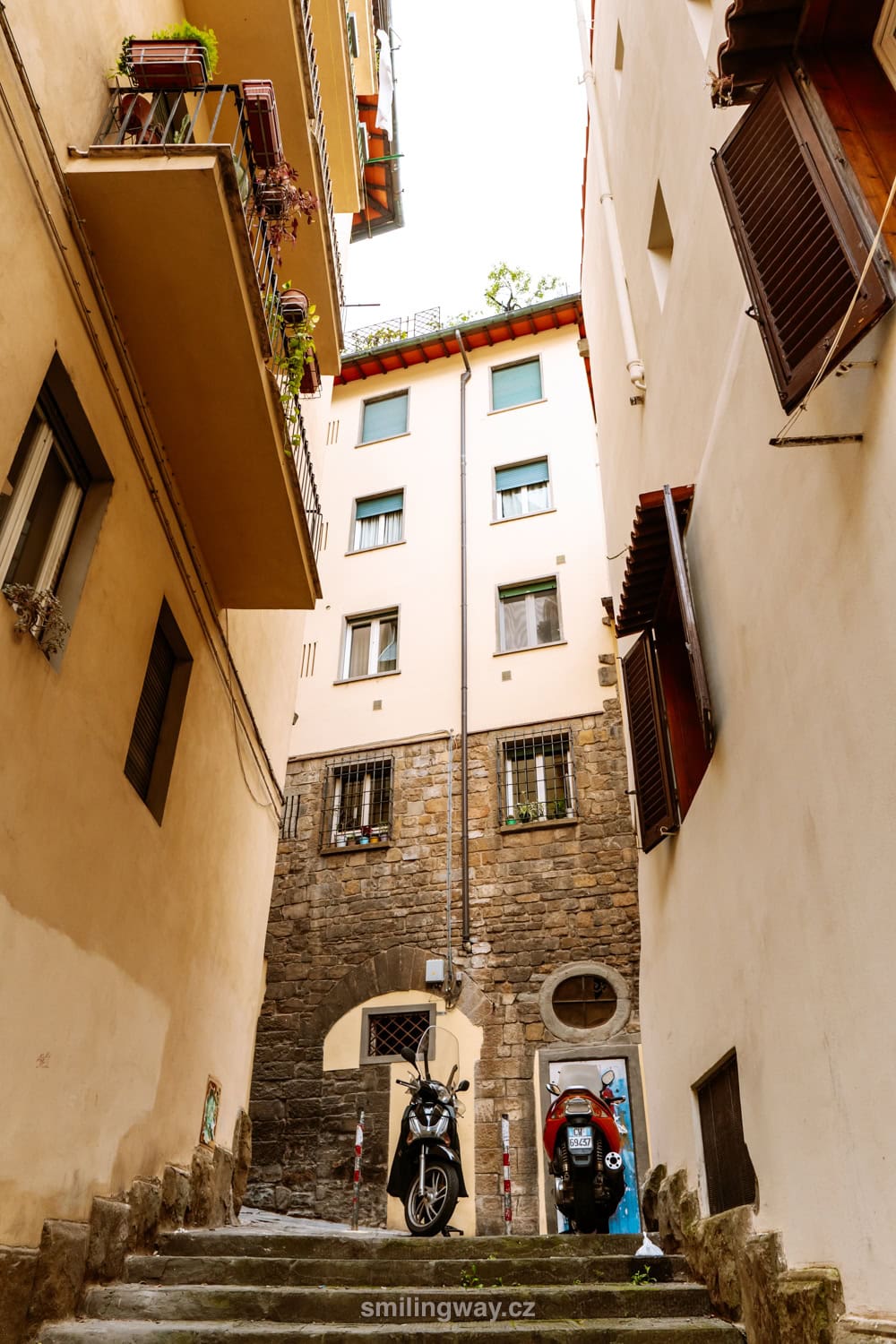
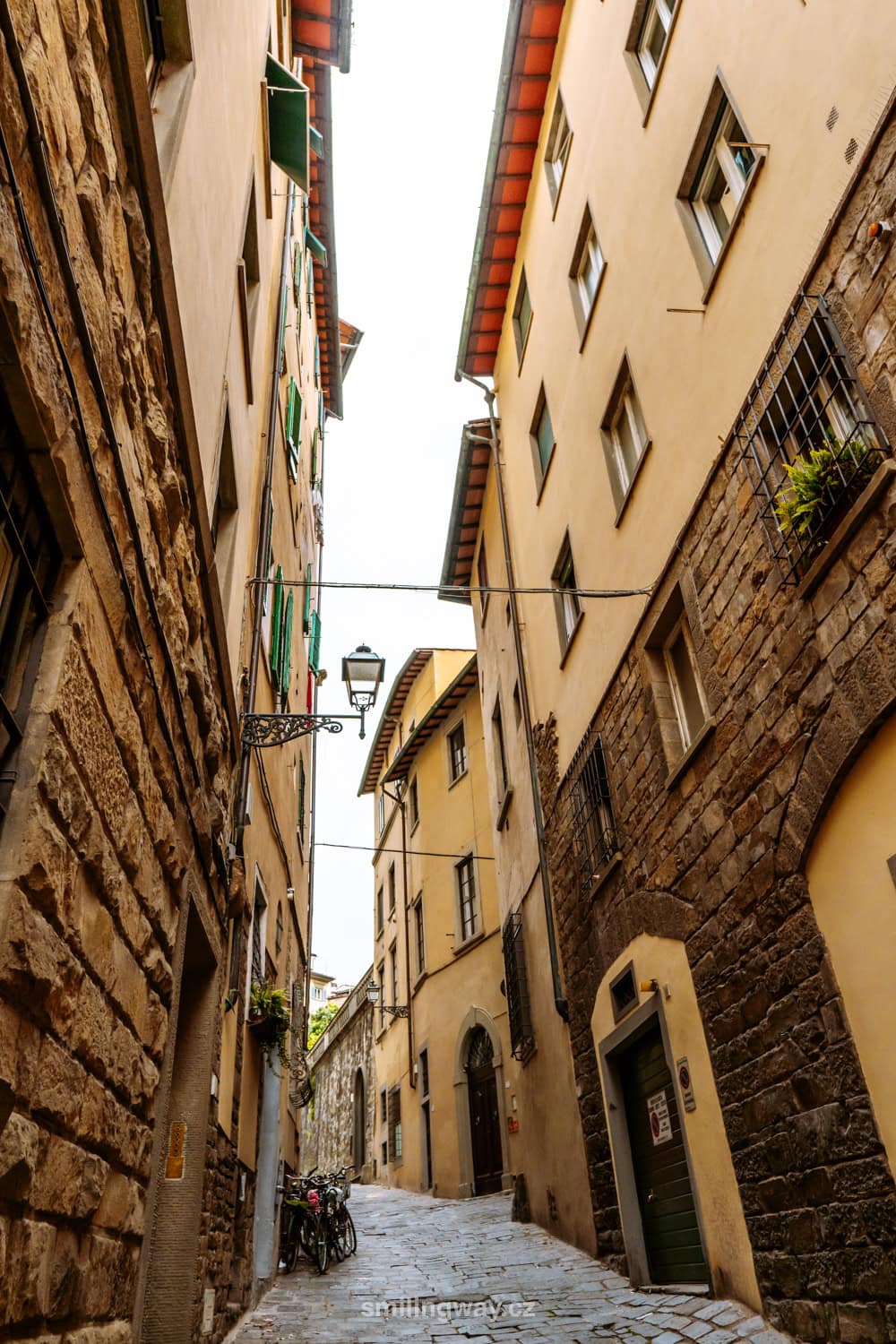
Many famous names are linked to Florence, from the architect Brunelleschi, the painters Leonardo da Vinci, Ghiotto and Botticelli, the poet Dante Aligheri, the sculptor Michelangelo and the philosopher Machiavelli.
Galileo Galilei, who was born in nearby Pisa, also did much of his work in Florence.
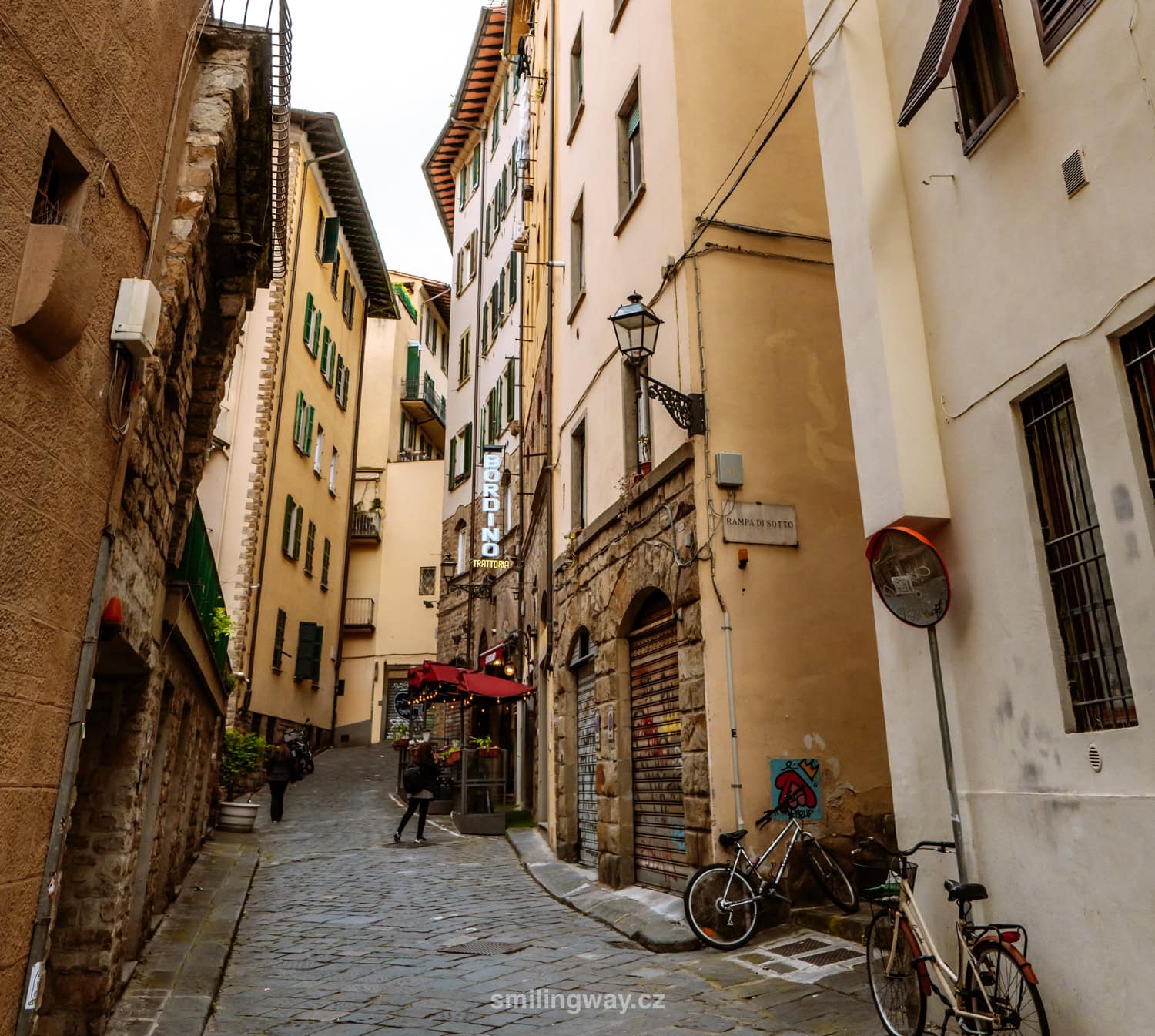
Things to do in Florence: Best places to see
Visit the Uffizi Gallery, a world-famous art museum with an exceptional collection of Italian Renaissance art, and climb to the top of the Duomo dome for a fantastic view of the city. Explore the historic centre and discover Florence’s most beautiful sites, including the Ponte Vecchio and the Accademia Gallery, which houses the Statue of David, one of Michelangelo’s most famous works.
End the day with a view of Florence and a glass of wine grown in the nearby Tuscan vineyards.
Let’s take a look at the most beautiful places and sights to visit in Florence:
1. Cathedral of Santa Maria del Fiore
The Cathedral of Santa Maria del Fiore (Cattedrale di Santa Maria del Fiore) is more commonly known as the Duomo (like in Milan) or the Florence Cathedral. Fiore means flower.
The cathedral is the most famous and, with its marble facade with shades of pink and green, the most beautiful cathedral in Florence, which you will see in most photos of Florence.
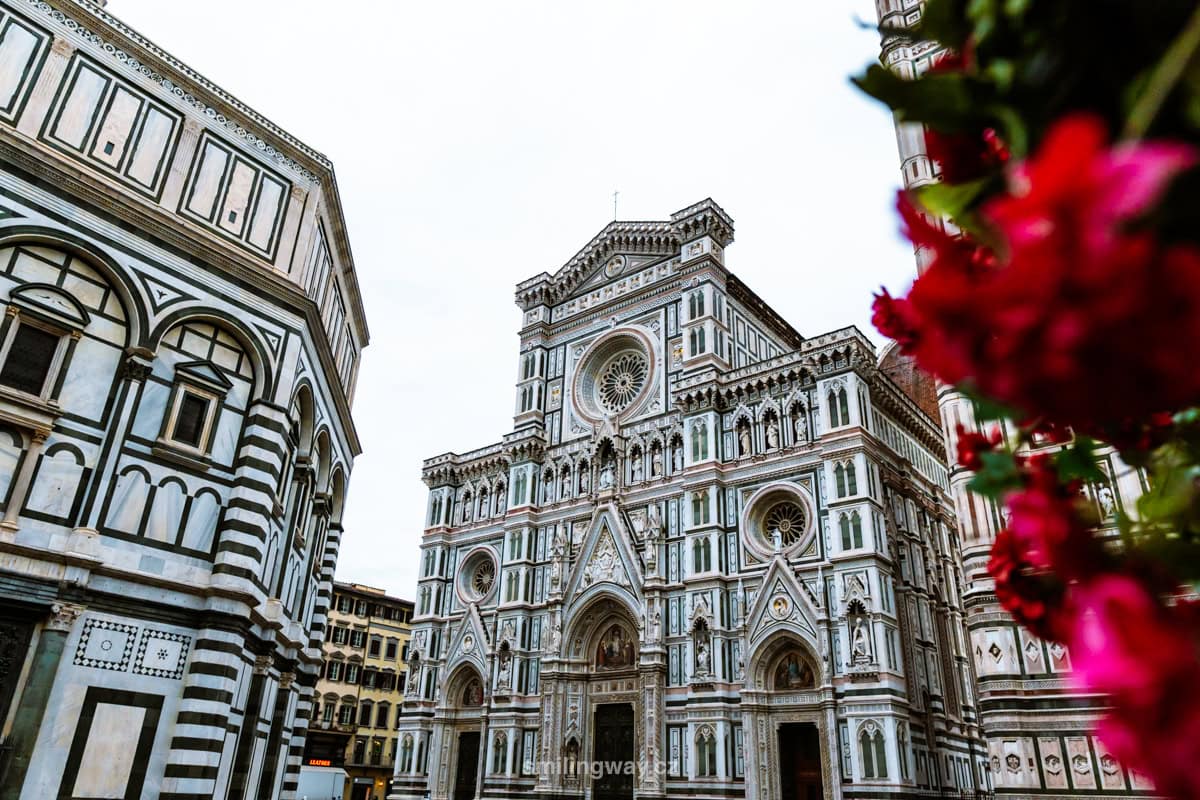
It literally shines with its red dome by Brunelleschi above the rest of the city. The Red Dome is also the largest brick dome in the world. The exterior of the cathedral is detailed with 3 bronze doors.
In contrast, the interior may surprise you with its simplicity until you look up and see the beautiful fresco in the dome.
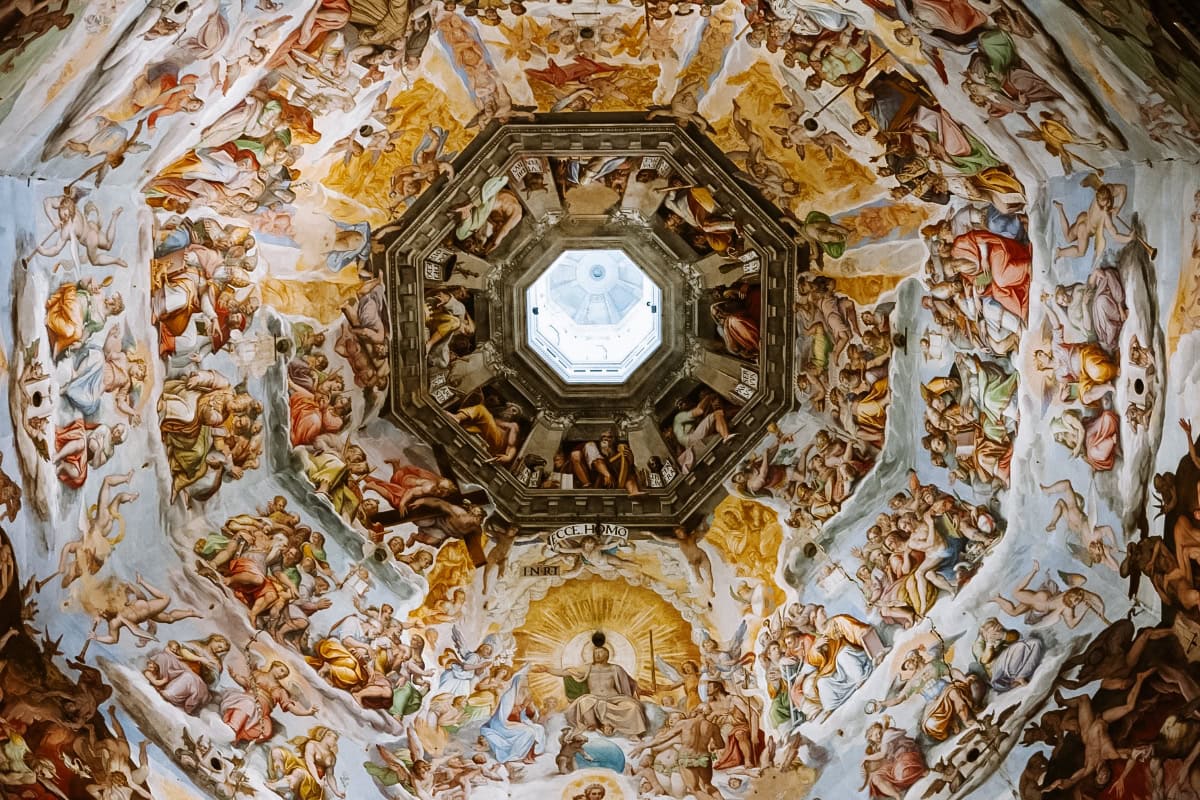
Construction of the cathedral began in 1296 and lasted 140 years. For two centuries, Santa Maria was the largest cathedral in the world until it was surpassed by St Peter’s Cathedral in the Vatican and St Paul’s Cathedral in London. The cathedral is so large that it occupies almost the entire area of the Piazza del Duomo.
Through the cathedral there is also an entrance to its underground, where the remains of the ancient basilica of Santa Reparata (Crypt) are located.
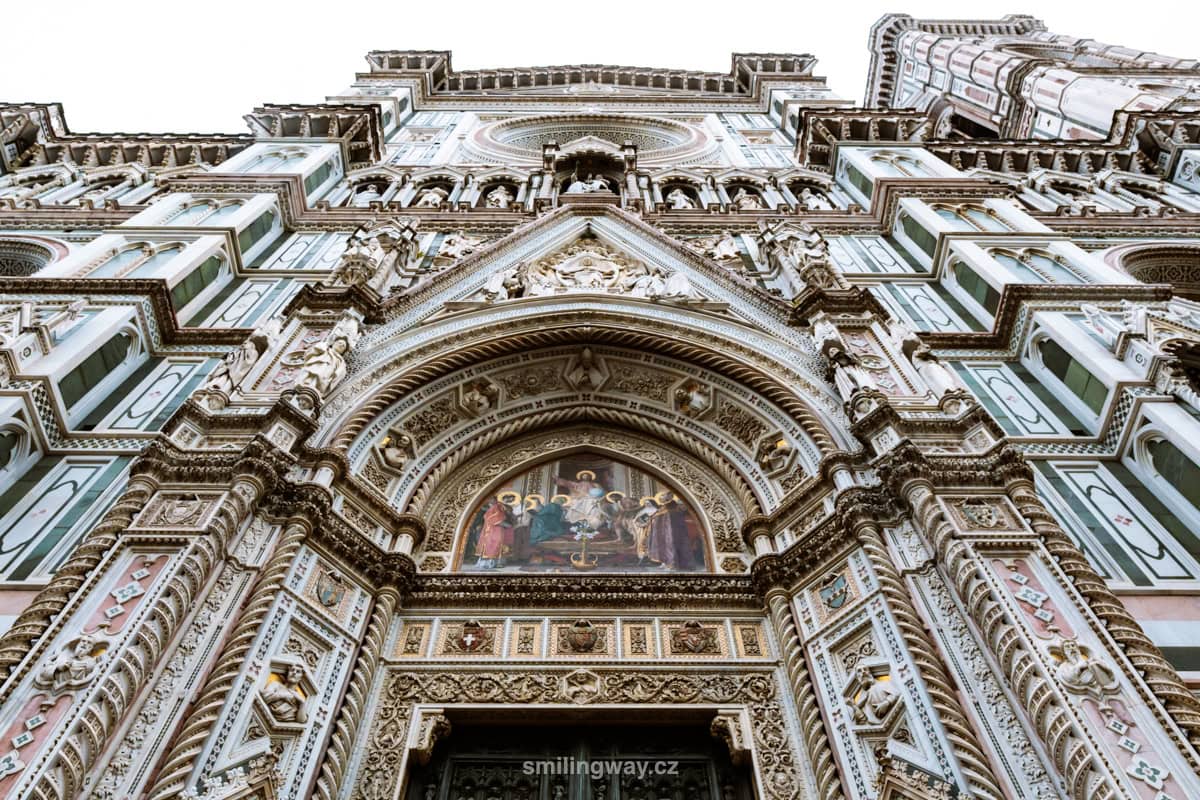
Admission to Santa Maria del Fiore Cathedral
Admission to the cathedral is free. However, you have to pay to enter other parts – the Duomo museum, the dome, Giotto’s bell tower, the baptistery, the underground ruins under the cathedral (crypt). Especially in high season, entry to the dome can be booked days or weeks in advance (this is similar to the Vatican Museums or the Colosseum in Rome).
Tickets for individual seats can be purchased directly opposite the entrance door to the baptistery or to the right of the cathedral. When you enter, you just scan the ticket. The second option is buy tickets online on the official website, where you choose what you want to visit – there are 3 passes to choose from.
Tip: If you are planning to visit the dome, I recommend ordering tickets online to make sure they are not booked up for the next few days. The entrance to the dome is then through the Porta della Mandorla – from the front of the cathedral, you walk along the left side of the dome where the entrance is located.
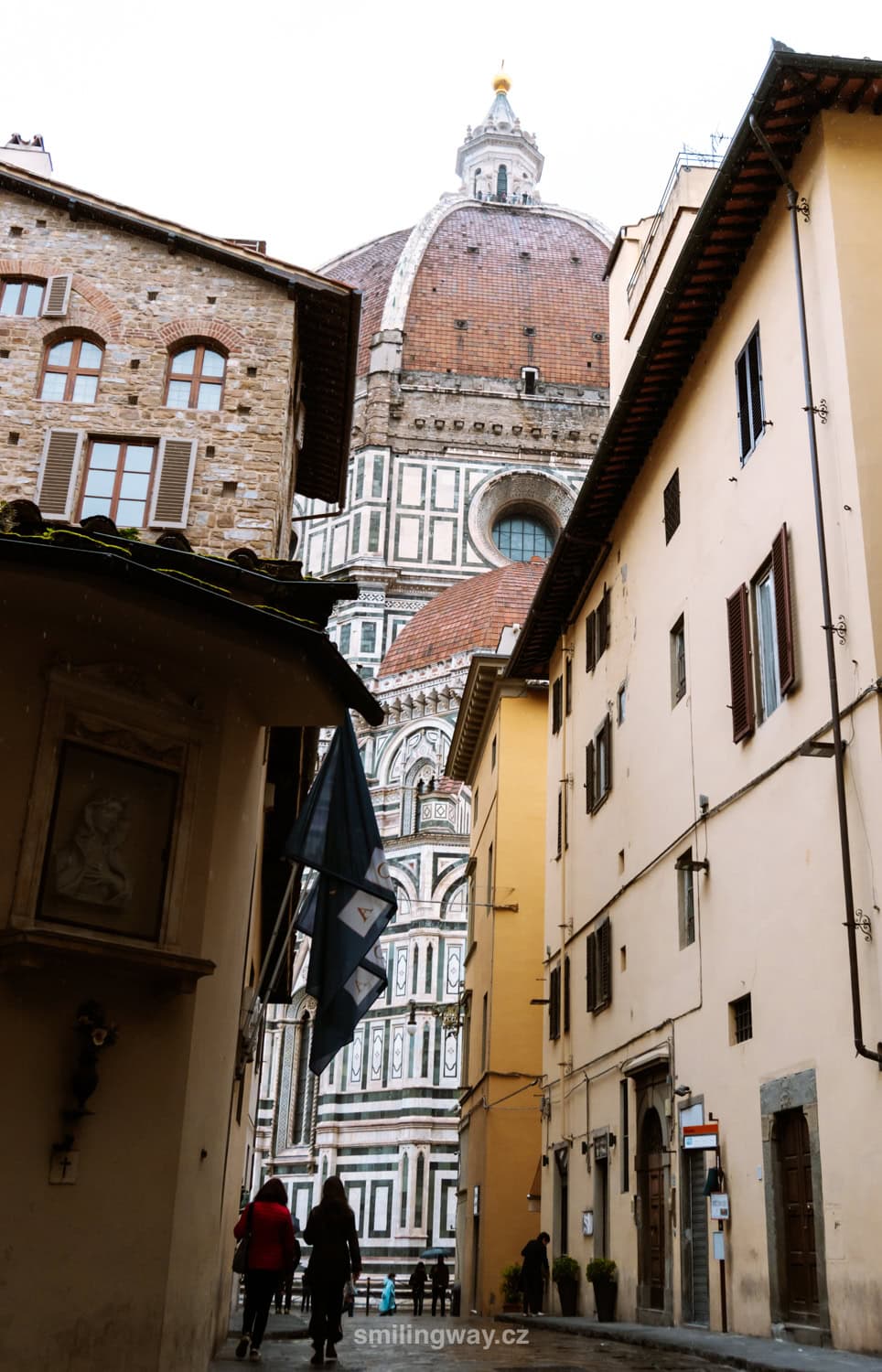
Entrance packages to the Duomo complex:
- Brunelleschi Pass (includes the dome, bell tower, crypt, baptistery, museum) – full admission is 30 €, reduced admission 12 € for children 7-14 years, free admission for disabled with an escort
- Giotto Pass (includes the bell tower, crypt, baptistery, museum) – full admission is 20 €, reduced admission 7 € children 7-14 years, free admission for disabled with an escort
- Ghiberti Pass (crypt, baptistery, museum) – full admission is 15 €, reduced admission 5 € for children 7-14 years old and students (students have a discount only on the Ghiberti Pass), free admission for disabled with an escort
Opening hours of the individual locations in the Duomo complex:
- Cathedral: Monday to Saturday 10:15-15:45, Sunday closed
- Dome: Monday to Friday 8:15-19:30, Saturday 8:15-17:15, Sunday and holidays 12:45-17:15, last entry always 45 minutes before
- Baptistery: daily 8:30-19:30, first Sunday of the month 8:30-13:30.
- Duomo Museum: daily 8:30-19:00, closed on the first Tuesday of every month
- Bell tower: daily 8:15-18:45 (last entry 19:00)
- Crypt: Monday to Saturday 10:15-16:00, Sunday and holidays 13:30-16:00
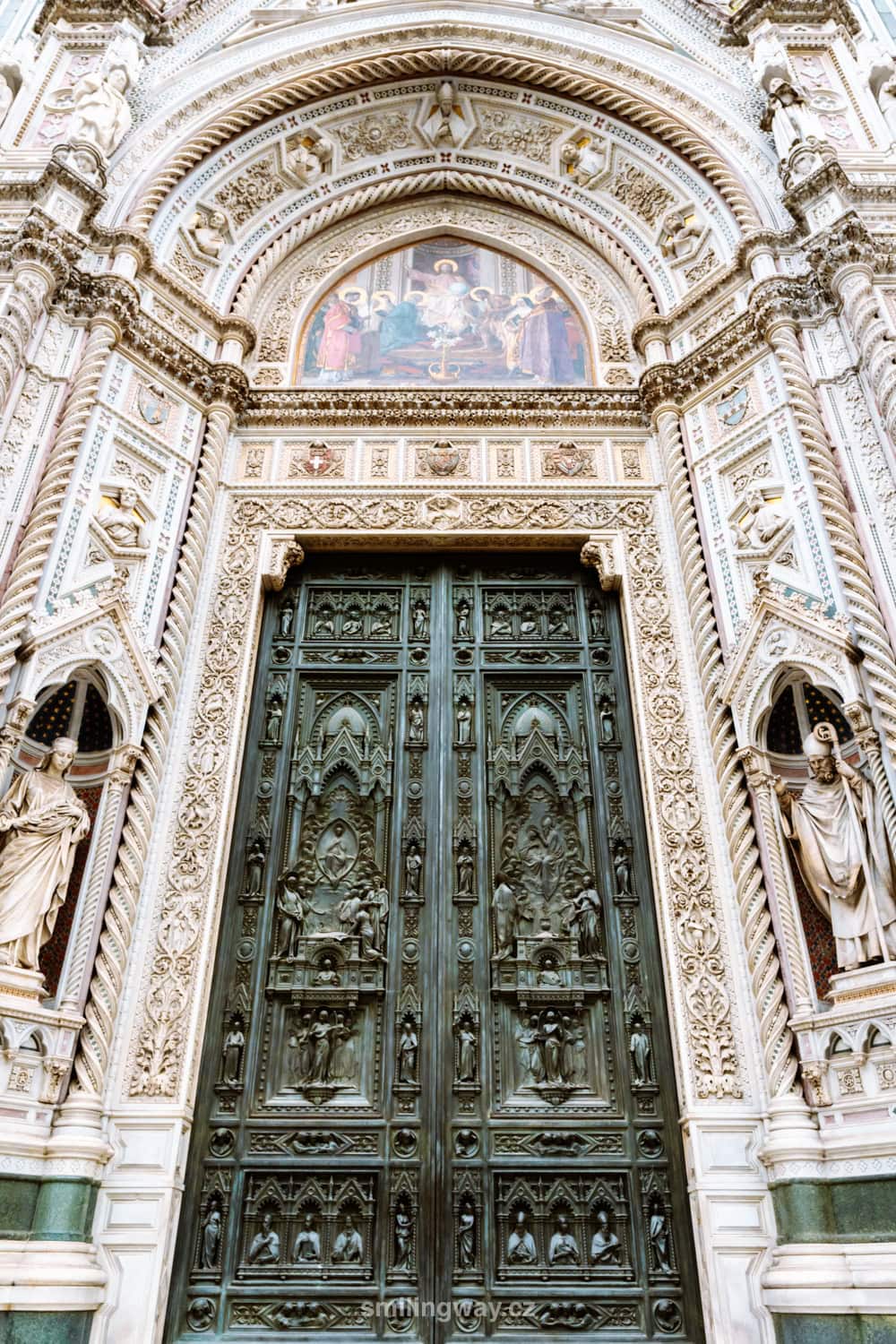
2. Duomo Museum
The Duomo Museum (Museo dell’Opera del Duomo) is an art museum with works by Michelangelo, Donatello, Brunelleschi, Ghiberti and others. The collection occupies 28 rooms and 3 floors, so allow at least 2 hours for a tour.
Here you will see the original sculptures from the bell tower and the cathedral, the original gilded panels from the door of the baptistery by Lorenzo Ghiberti and the original Bruneleschi designs for the dome.
Tickets to the Duomo Museum can be buy online as part of one of three packages (see above). The other option is to buy a ticket on the spot (for example, across from the baptistery). The Duomo Museum is open daily from 8:30-19:00.
Hotels Florence 😴
3. Giotto’s bell tower
The Campanile di Giotto is a detached bell tower to the right of the Cathedral of Santa Maria del Fiore. It takes its name from its architect Giotto di Bondone, a forerunner of the Renaissance. Inside there is an information stand with souvenirs.
You scan your ticket and start climbing up the narrow stairs to the top. There are a lot of stairs, which are quite narrow in places and now and then you have to wait for others to pass from the top. The bell tower has a total of 3 floors.
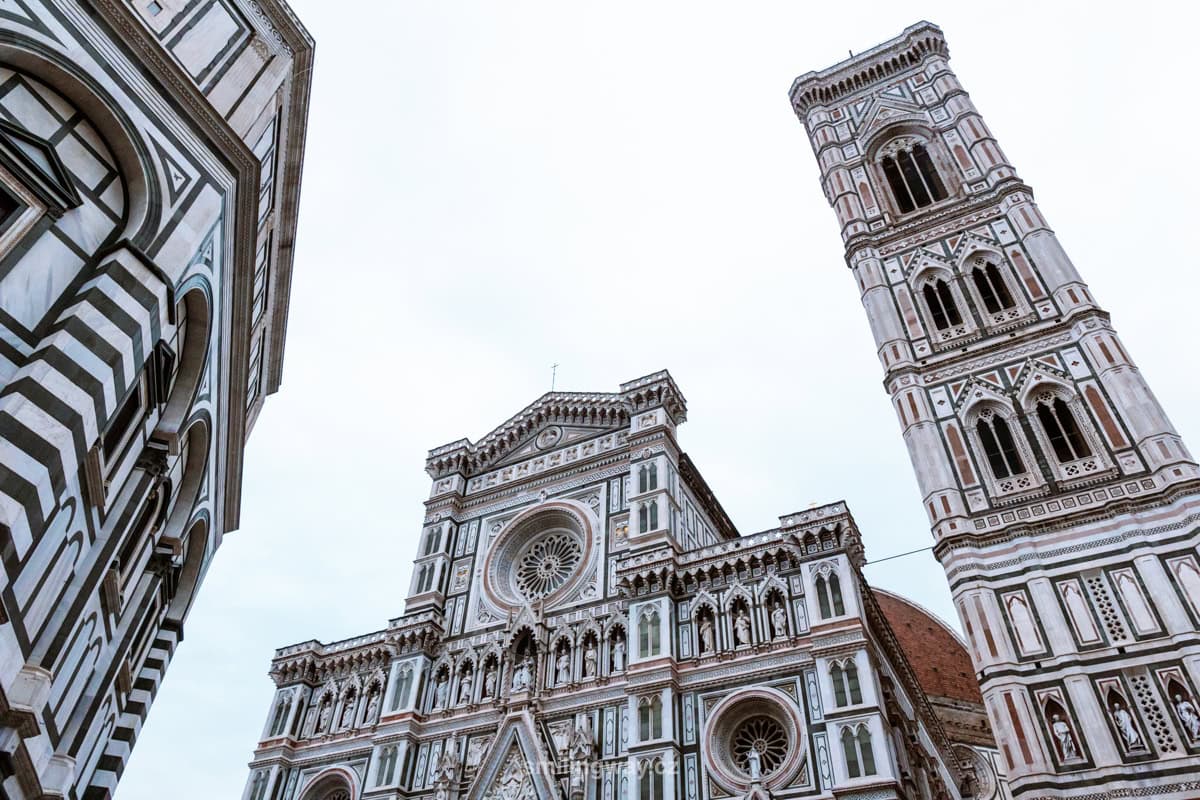
On each floor you can enjoy and relax at the same time. The most beautiful view is from the top of the outdoor terrace.
Tickets for the Giotto bell tower are purchased opposite the entrance door of the baptistery (as well as for other places in the cathedral complex) or online at (if you plan to visit the dome, be sure to book online in advance – they can sell out weeks in advance).
The bell tower is open daily from 8:15-19:45.
☞ More information: Itinerary for 2 days in Florence.
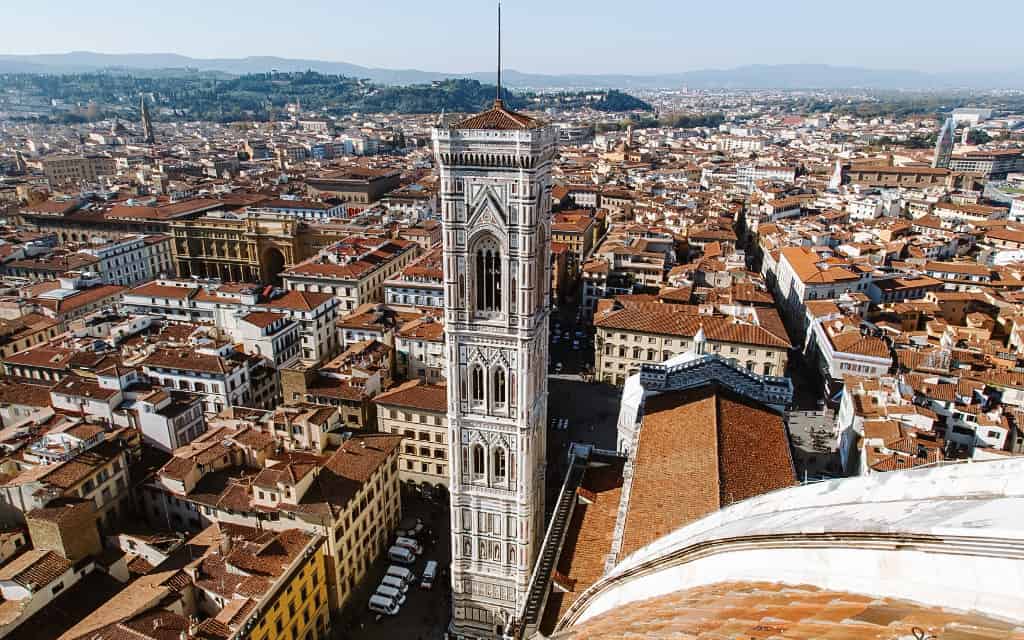
4. Baptistery of John the Baptist
The Baptistery of John the Baptist (Battisterio di San Giovanni) is one of the oldest monuments in Florence. It is located in front of the facade of Santa Maria del Fiore Cathedral in Piazza di San Giovanni. For the locals, it is the most important building in Florence.
It is octagonal with a marble facade and inspired by ancient Roman mausoleums. I liked the baptistery in Pisa a little better, but the baptistery in Florence impressed us with its bronze doors.
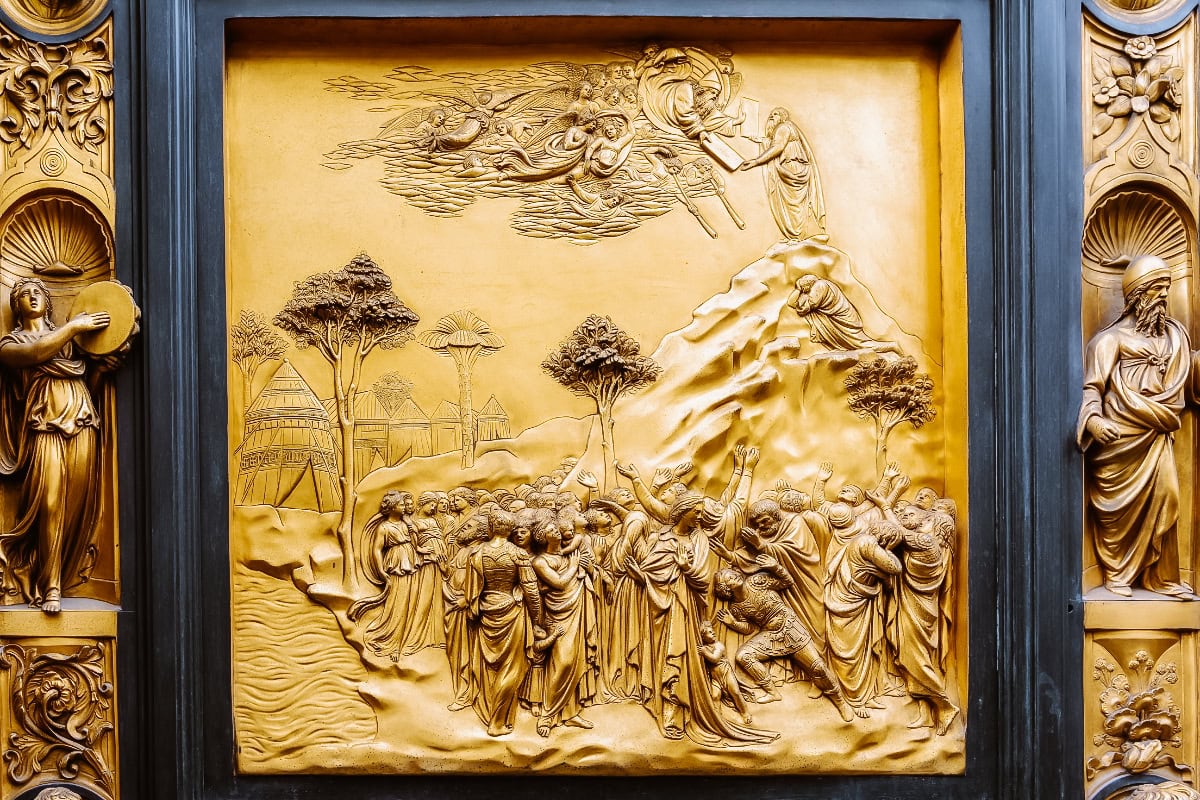
The most famous is the golden door by Lorenzo Ghiberti, which Michelangelo called the Gates of Paradise (the door directly opposite the cathedral). The next door depicts scenes from the Passion of Christ and the last scenes from the life of John the Baptist.
The ceiling of the baptistery is decorated with a beautiful gold mosaic of the Last Judgement with an opening through which daylight enters the baptistery. The mosaic took over 100 years to complete. It is huge and makes you look up all the time, just like the Sistine Chapel.
You can buy a ticket to the baptistery as part of a package (see above for information on the Duomo). It can be bought directly opposite the front door of the baptistery. The Baptistery is open daily 8:30-19:30.
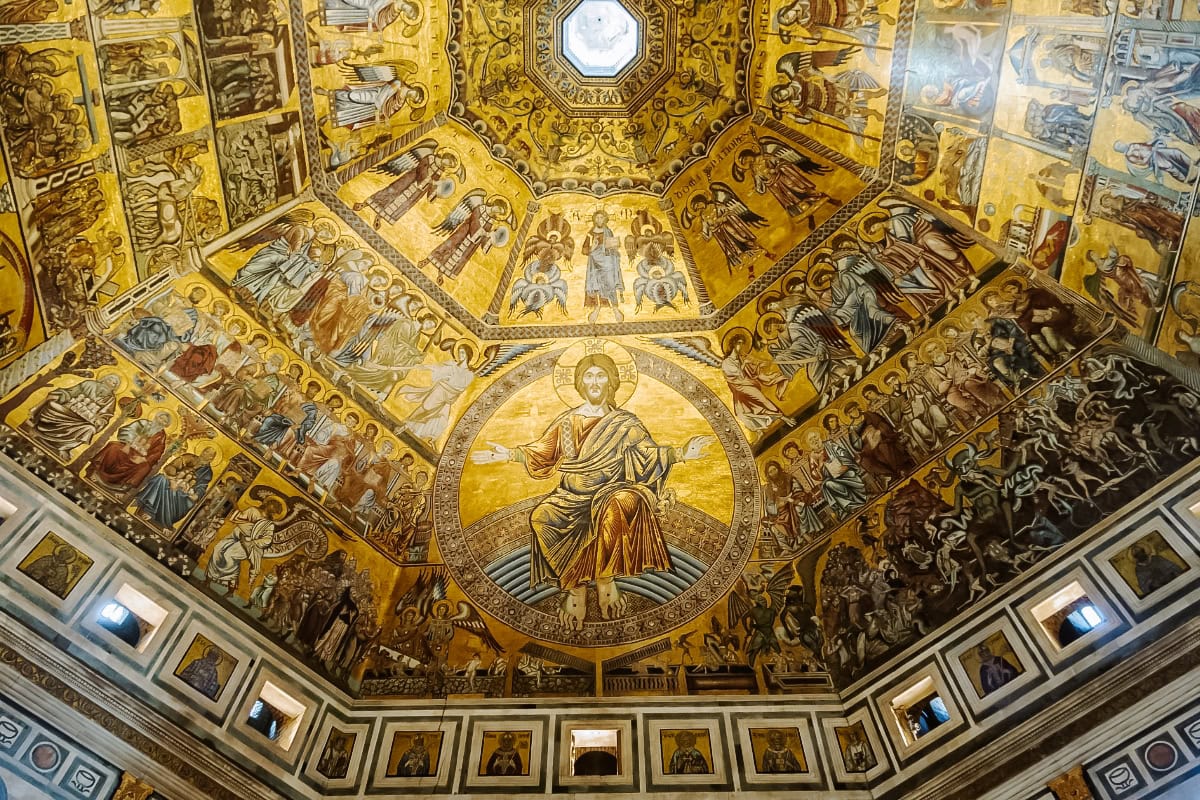
5. Basilica of San Lorenzo
The Basilica of San Lorenzo is one of the oldest Roman Catholic churches in the city and was the parish church of the Medici family. It will captivate you with its exterior of brown stone, which was to be followed by Carrara marble. But that never happened again.
The basilica is a huge complex consisting of the basilica, the old sacristy by Brunelleschio, the new sacristy by Michelangelo, the Medicean chapel and the Medicean library of Laurenziano.
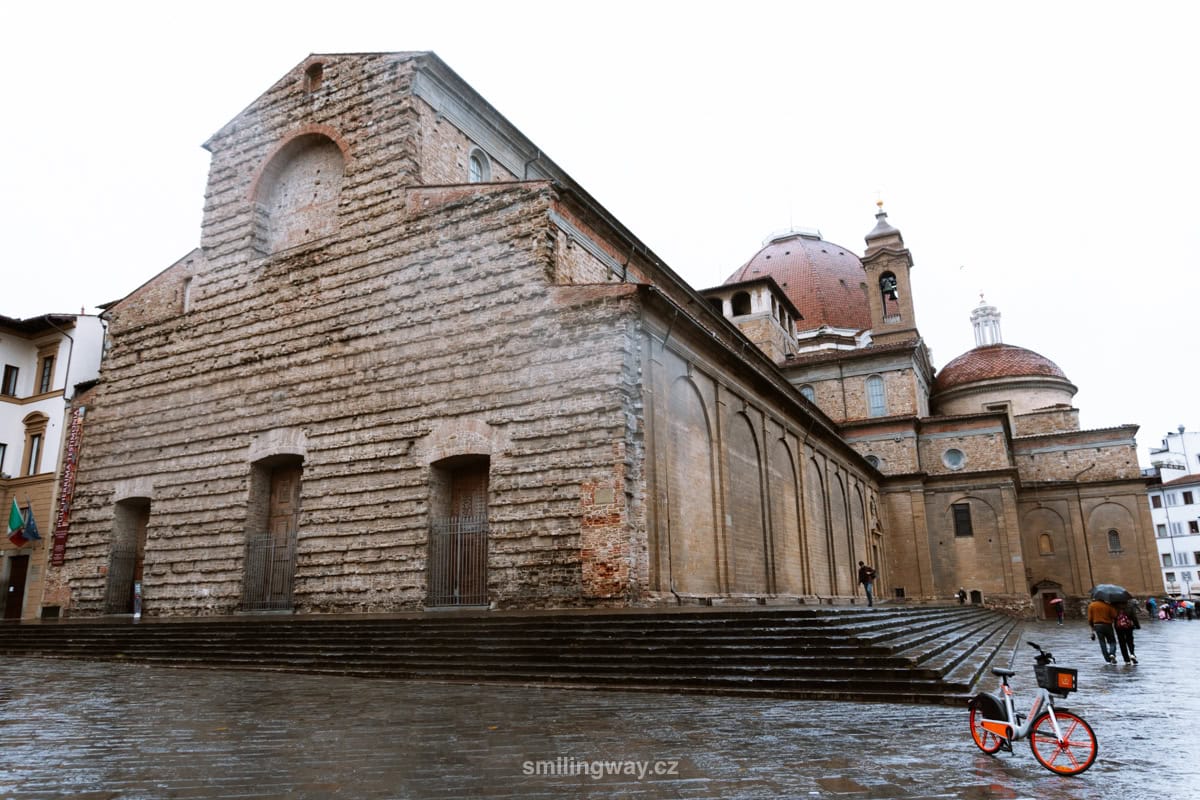
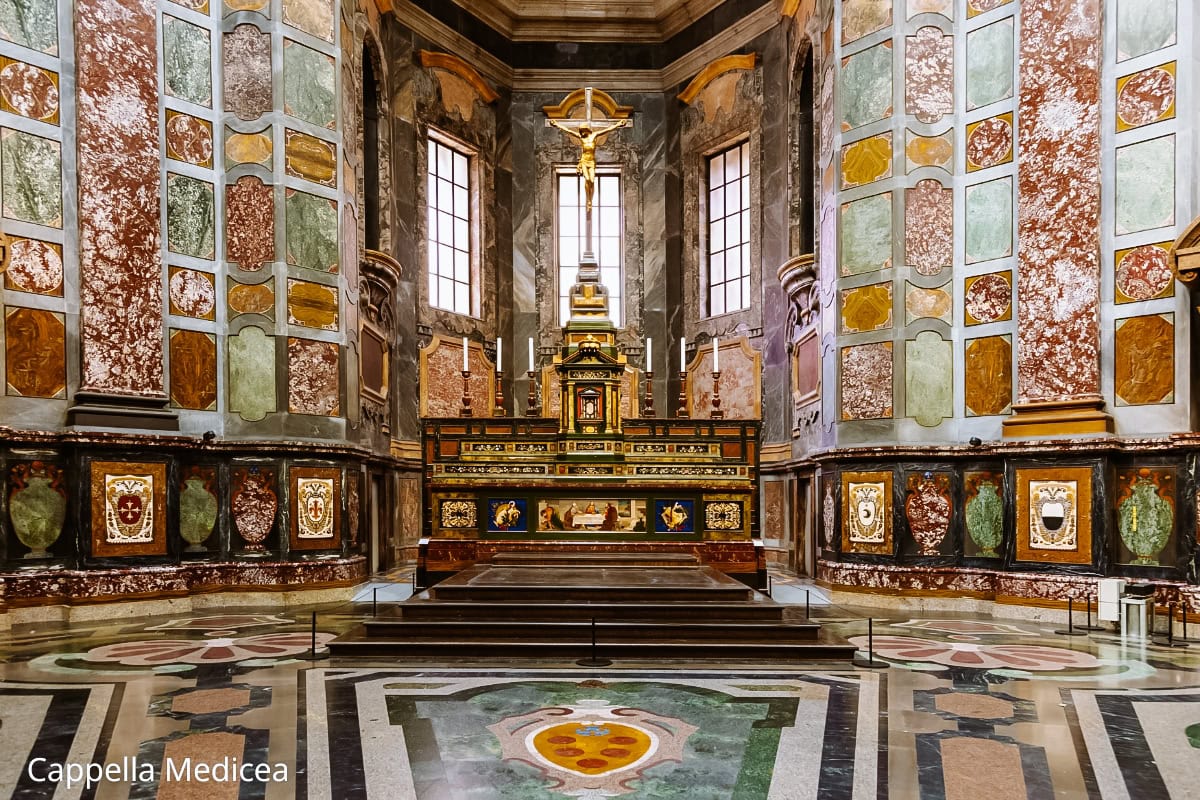
Most visitors head to the Medici Chapel, which is the mausoleum for nearly 50 prominent members of the Medici family. You have to go to the Medici Chapel book a ticket in advance.
The complex is open 10:00-17:30 (last entry 16:30). Admission to the complex is €9 (under 12s free) – it gives you access to the Basilica of San Lorenzo, the old sacristy, the monastery, the Treasury Museum, the crypt and the monumental underground. Ticket to the Medicean Chapel is not included (see previous paragraph).
6. Palazzo Medici Riccardi
Palazzo Medici Riccardi served from 15th century to the Medici family. Today it houses an art museum. Here you will see 6 well-preserved rooms including frescoes, a chapel, a dome and a well-kept garden. If you like art, you will like it here.
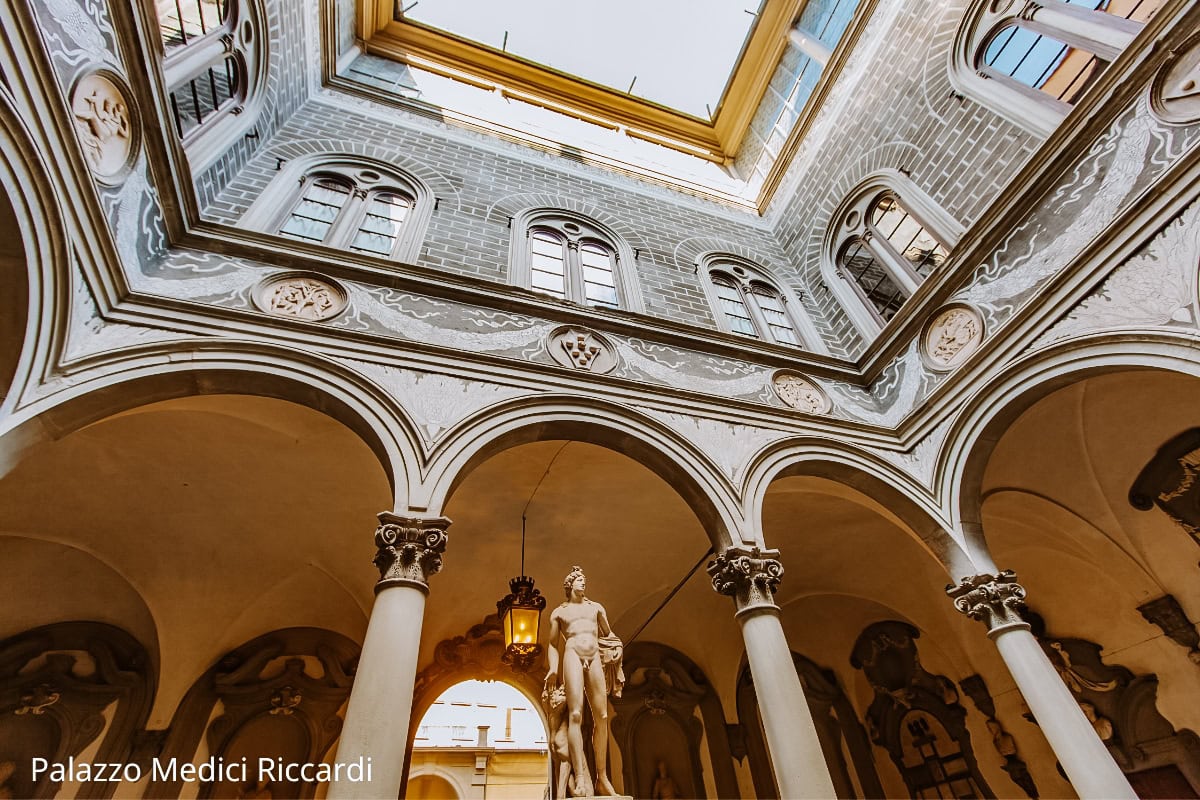
7. Accademia Gallery
The Accademia Gallery (Galleria dell’Accademia) is a short walk from Palazzo Medici Riccardi. It is housed in an unassuming building, not as glamorous as the Uffizi Gallery, for example.
You’ll know you’re there right away (especially in high season) – there’s a long line snaking around the walls. Everyone wants to see Michelangelo’s statue of David, which is the embodiment of the male ideal of beauty.
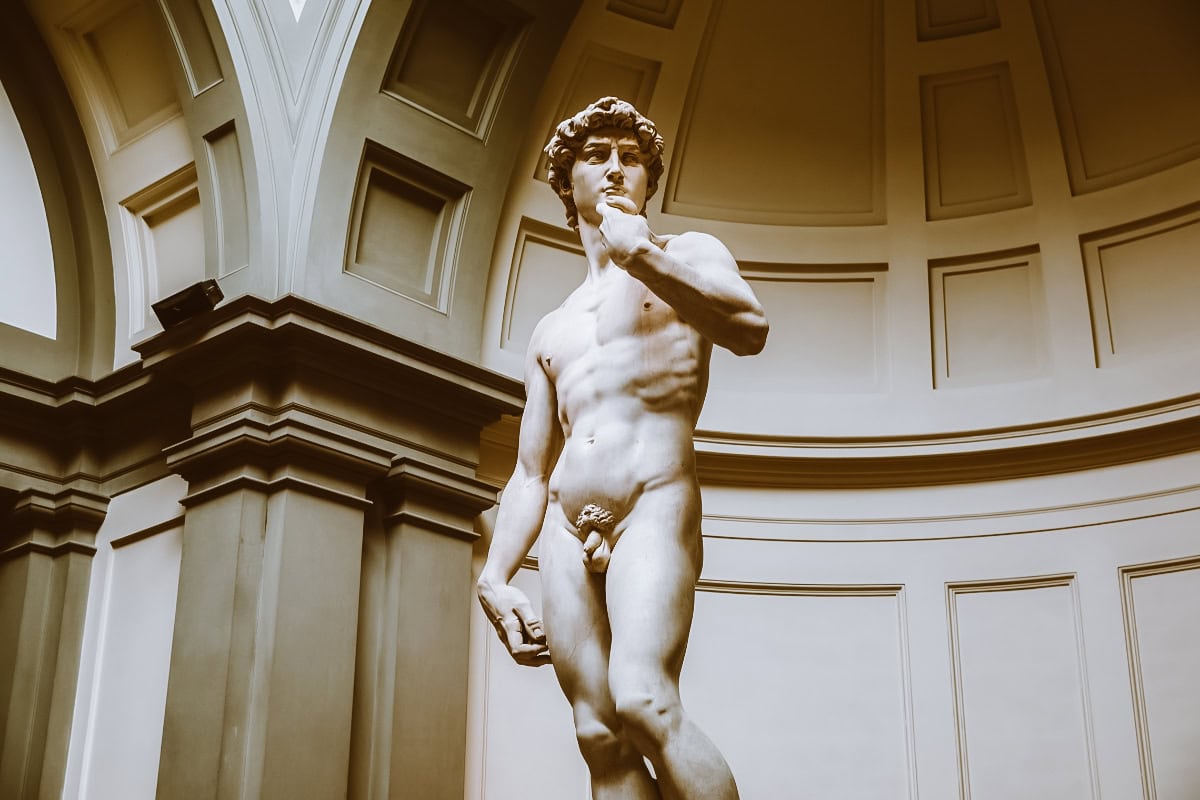
The statue was originally supposed to be part of the Duomo, but in the end they decided not to place it in the niche of the cathedral because of its beauty. The tour also includes an exhibition of musical instruments and unfinished sculptures by Michelangelo.
Open daily from 8:15-18:50 (last entry 18:20).
Full admission to the Accademia Gallery is €16, reduced admission €2 for EU citizens aged 18-25 + €4 advance booking fee. Free admission for children under 18.
Tip: Due to the long queues, it’s definitely better to make a reservation in advance so that tickets don’t sell out.
8. Leonardo Interactive Museum
The Leonardo da Vinci Interactive Museum is 5 minutes from the Galleria dell’Accademia. It’s great fun for kids and adults alike. Here you can try out the machines invented by Leonardo himself, all in a fun way. For each invention there is a detailed description of what the machine is to be used for.
It doesn’t take much time to visit the museum, but it’s worth it. Open daily 9:30-19:30 (last entry 18:30). Tickets are available easily purchased in advance and you don’t have to wait in line at the venue.

9. Piazza della Repubblica
Piazza della Repubblica is a large and lively square near Santa Maria Cathedral and Piazza del Duomo. Throughout history, it has been one of the most important places in Florence. In ancient times it was the site of the Florentine Forum, in the Middle Ages of the central market and from the 16th to the 19th century of the Jewish ghetto.
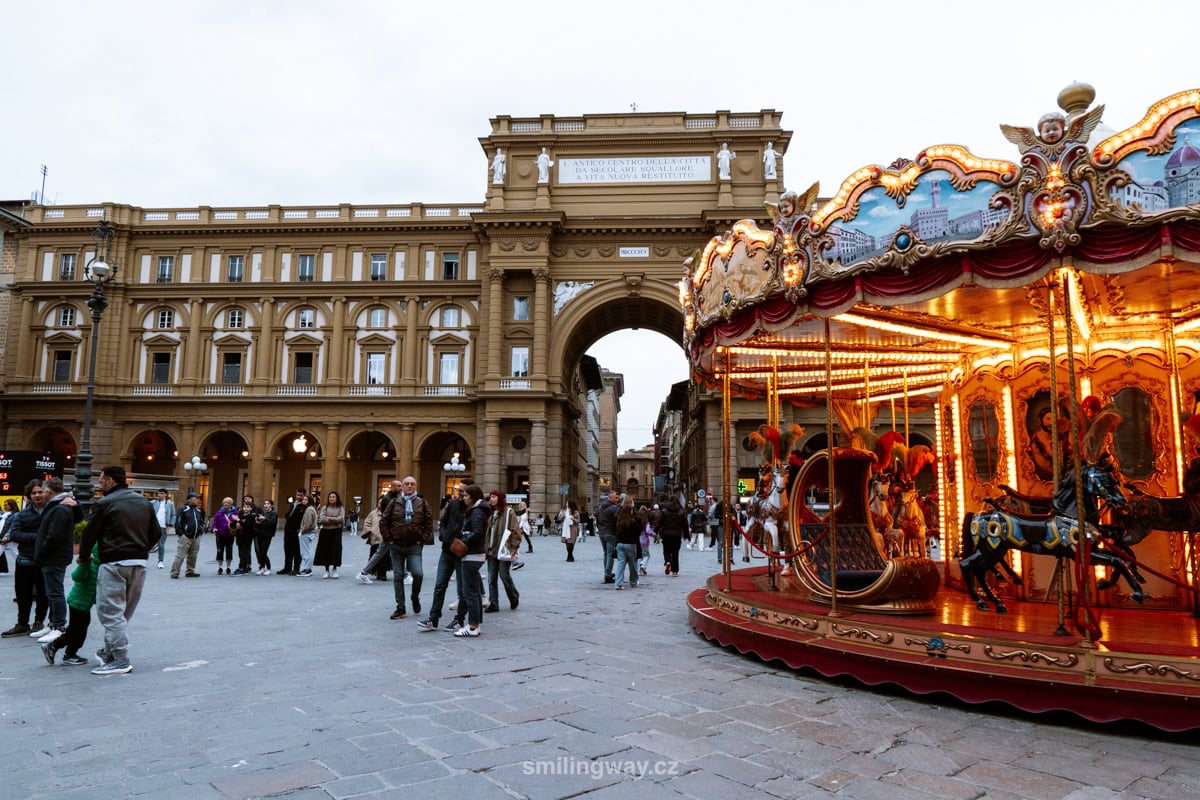
After the creation of the Kingdom and the unification of Italy in 1861, the Piazza della Repubblica was completely rebuilt. As a reminder of history, only the Column of Plenty remains, representing the meeting point of Roman roads in antiquity.
Today you’ll find plenty of restaurants, shops, a carousel and street performers in Piazza della Repubblica.
10. Fontana del Porcellino
Fontana del Porcellino is a bronze statue of a boar whose mouth represents a small fountain. When you arrive at Piazza del Mercato Nuovo, you’ll see a historic building with distinctive arches – the New Market Loggia, where the market is housed. Walk past the building and on your right you will see a statue of a wild boar with a fountain.
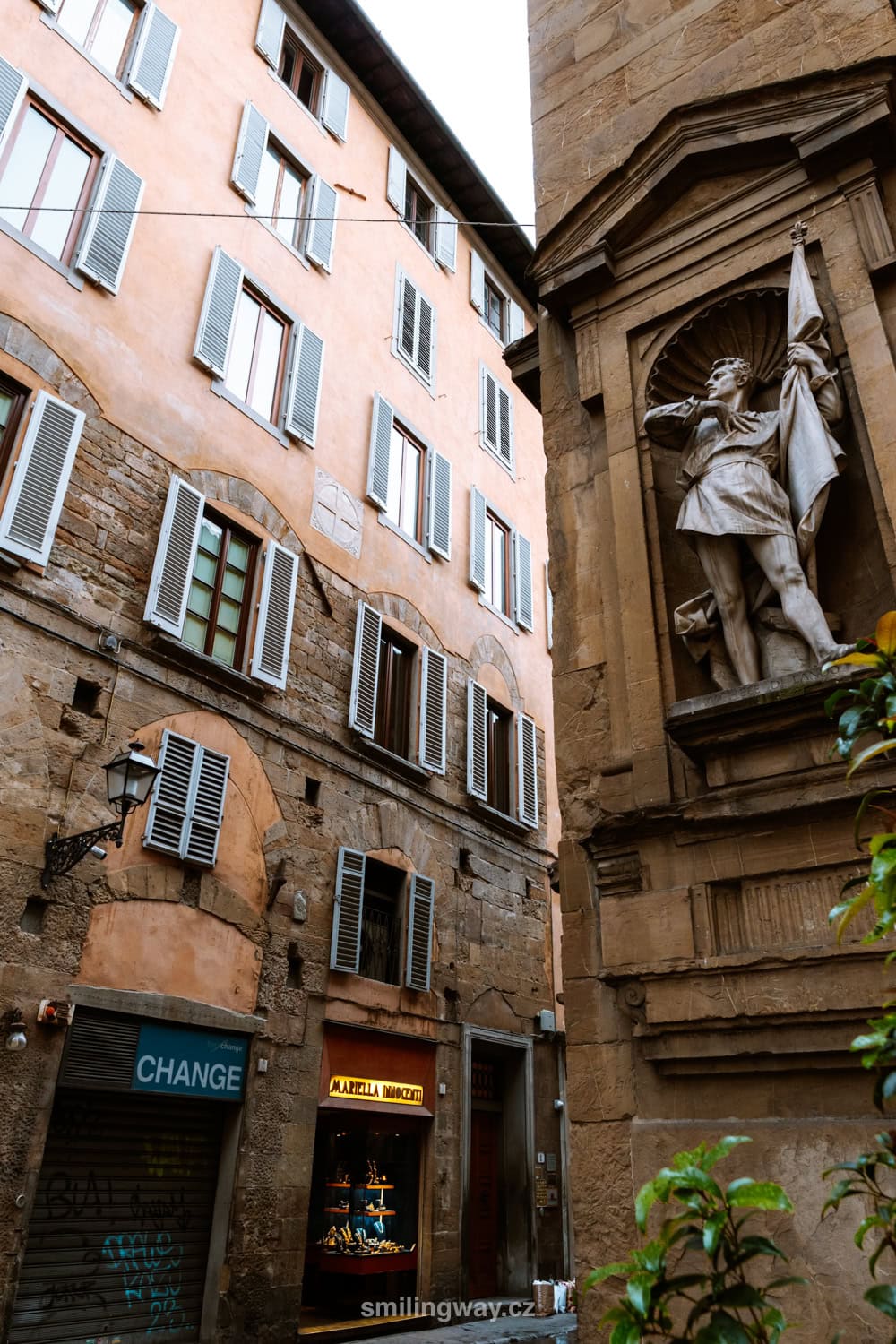

There is a nice legend connected with the wild boar statue – if you stroke the boar’s snout, it is said that you will return to Florence one day. He is petted by so many visitors daily that his snout is bright gold compared to the rest of his body.
If you put a coin in his mouth (where the water flows out) and the coin then falls onto the grid at the bottom of the fountain while you make a wish, the wish will come true.
The statue has also been stolen several times in the past, so you can find a replica of it on the site (you can see the original in the Bardini Museum).
11. Piazza della Signoria
Piazza della Signoria forms the imaginary heart and historical centre of Florence. It is one of the most beautiful places in Florence and you shouldn’t miss the square during your visit to the city.
What are the top places in Piazza della Signoria? Neptune’s fountain, Michelangelo’s statue of David (replica as in Piazzale Michelangelo, the original can be seen in the Accademia Gallery), Palazzo Vecchio and the grouping of statues on the right side of the palace (Loggia dei Lanzi).
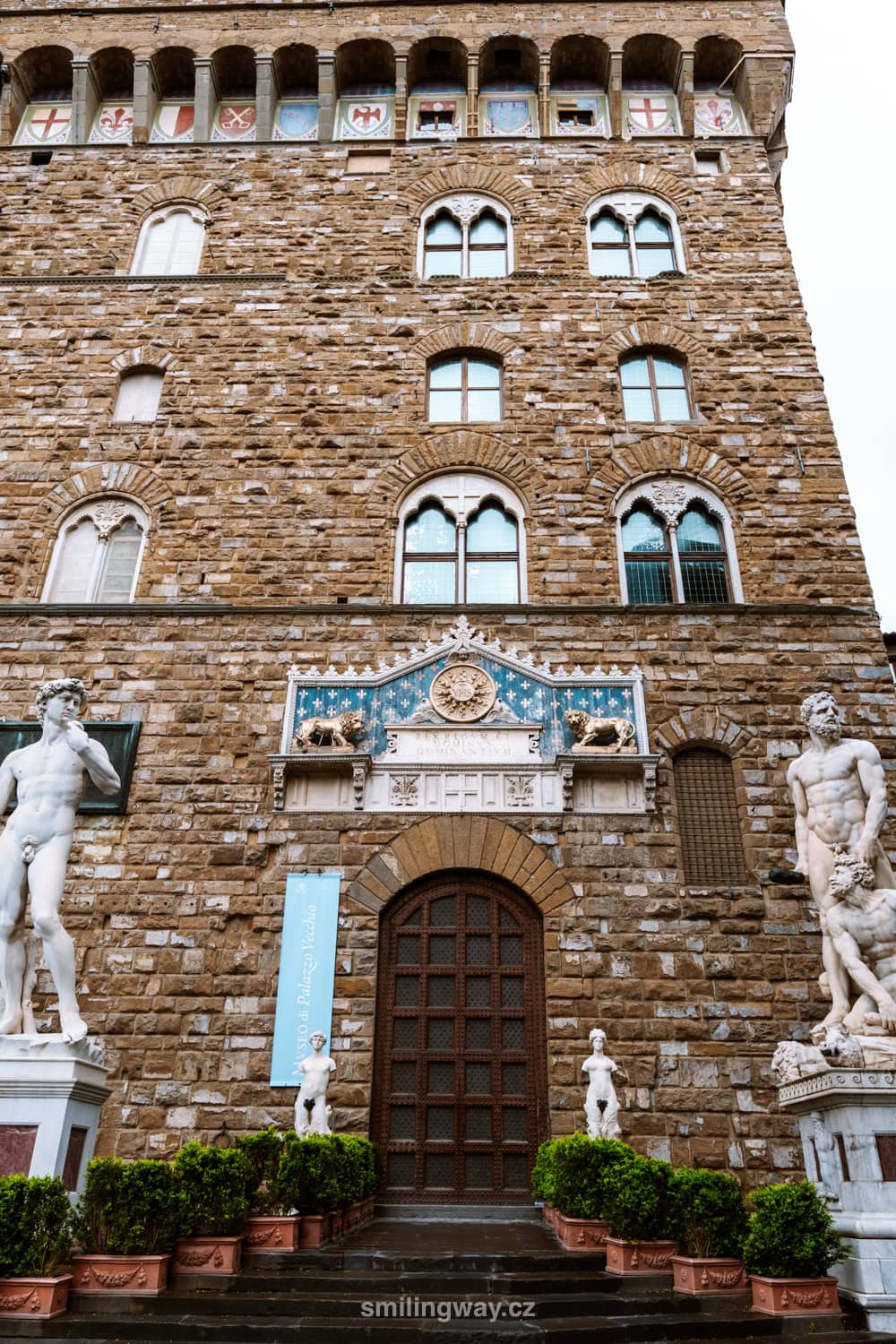

Palazzo Vecchio
In the Vecchio Palace in Piazza della Signoria a nice piece of Florentine history took place. The palace was built at the turn of the 13. and 14th century as a medieval fortress from where the city council governed the Florentine Republic. The Palazzo Vecchio was designed by architect Arnolfo di Cambio, who also designed Santa Maria Cathedral.
The Palazzo Vecchio is now a museum. It has a richly decorated interior. On the first floor is the Hall of Five Hundred, where 500 members of the City Council have held meetings in the past.
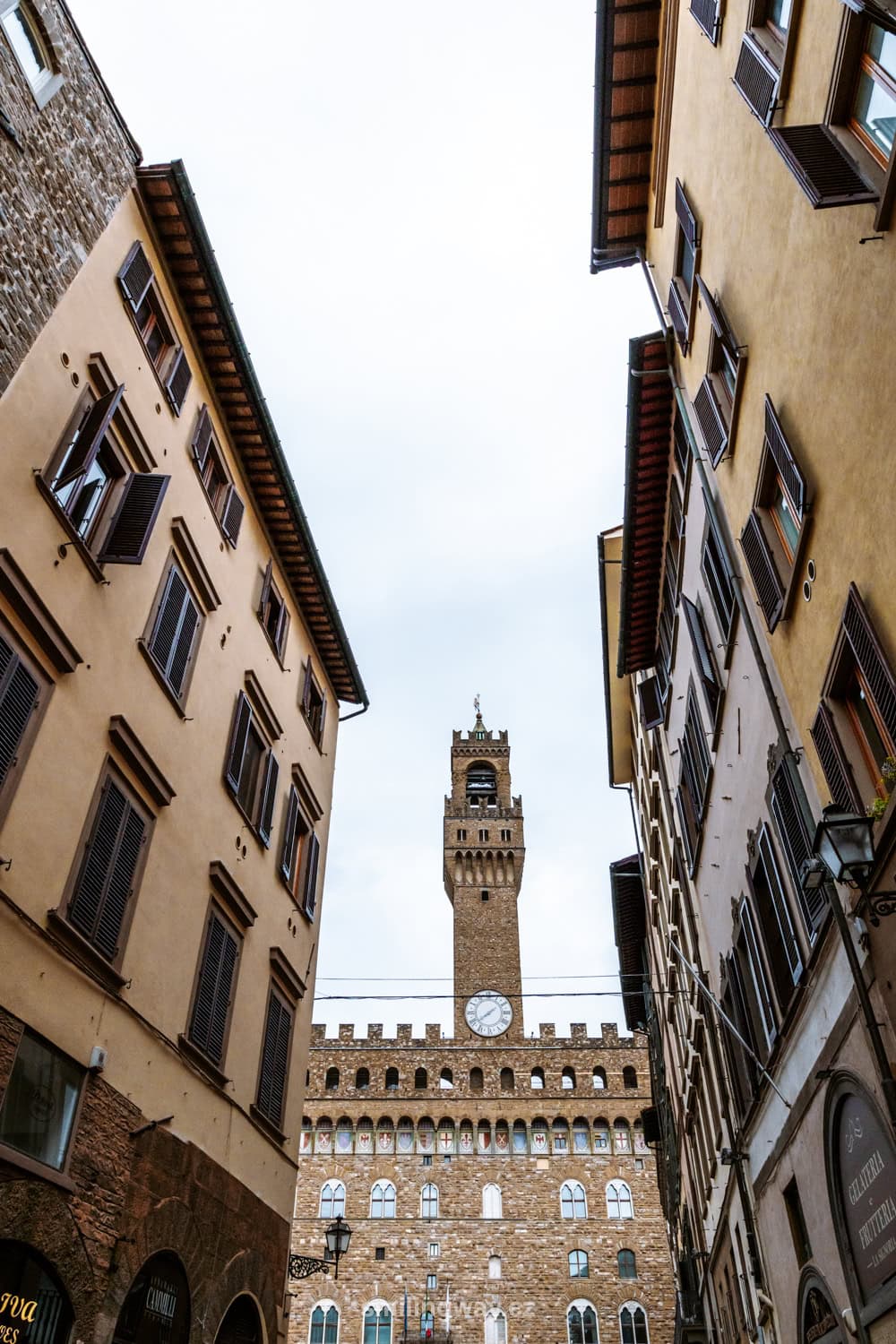
It has a coffered ceiling and battle frescoes by the Medici court painter Giorgi Vasari. On the 2nd floor are the ornate rooms of the Medici family with Donatello’s bronze statue of Judith.
In the Palazzo Vecchio, you can climb 400 steps to the top of the Torre d’Arnolfo clock tower and enjoy a spectacular panoramic view (tickets for the tower are sold separately).
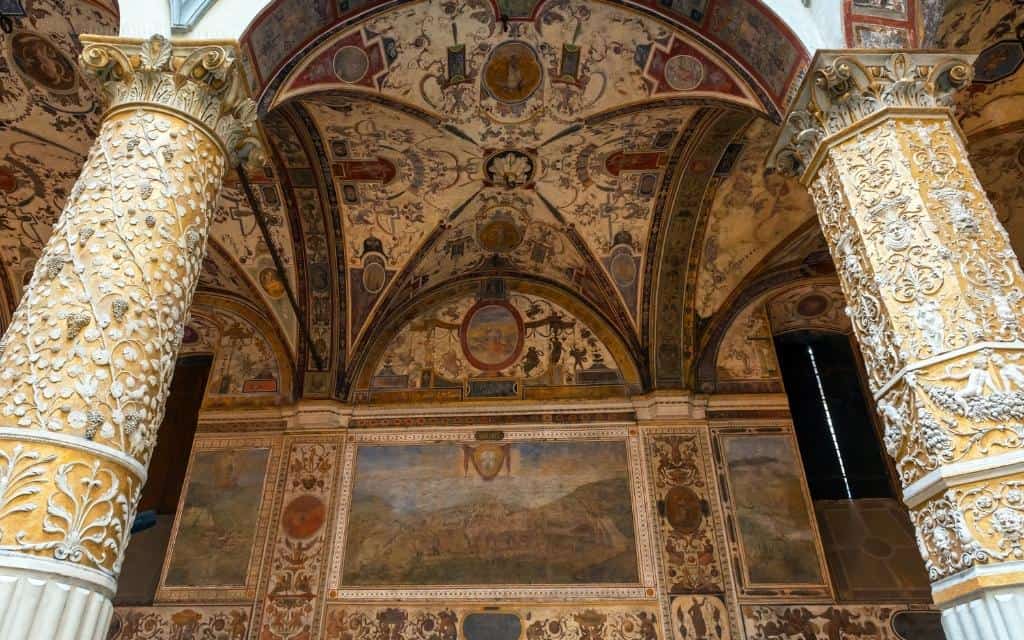
If you look carefully at the palace wall to the right of the entrance door, you will see a carving of a man’s face. To this day, experts still argue about whether it is a carving by Michelangelo, with a man’s face looking at the statue of David just outside the entrance.
The palace is open daily from 9:00-19:00 except Thursdays, when it closes at 14:00. Admission is €12.50 for the museum and €12.50 for the view from the tower + advance booking fee.
☞ Book your entrance to the Vecchio Palace here (including the view from the Arnolfo Tower).
12. Uffizi Gallery
Galleria degli Uffizi is a famous art museum that is 4th the most visited museum in Italy (and that there is a lot of competition in Italy).
It contains the finest collection of Italian Renaissance art in the world, set in magnificent spaces. You can also enjoy ancient statues, grotesque frescoes on the ceilings and other art.
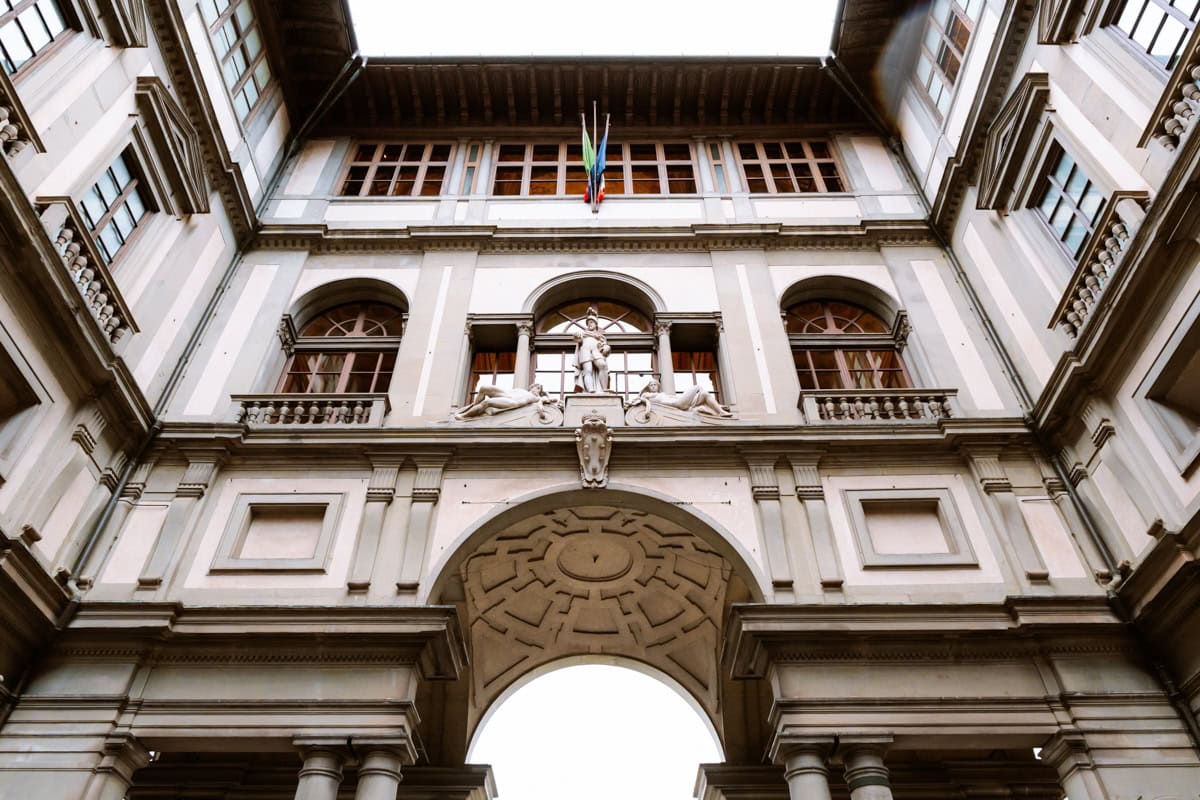
Everything is divided into a total of 45 halls on 2 floors. If you are an art lover, set aside 3-4 hours for your visit. There’s not a lot of seating.
The gallery lies between the Vecchio Palace and the Arno River, which flows through the city of Pisa, where you’ll find the Leaning Tower (Pisa is only an hour by train from Florence).
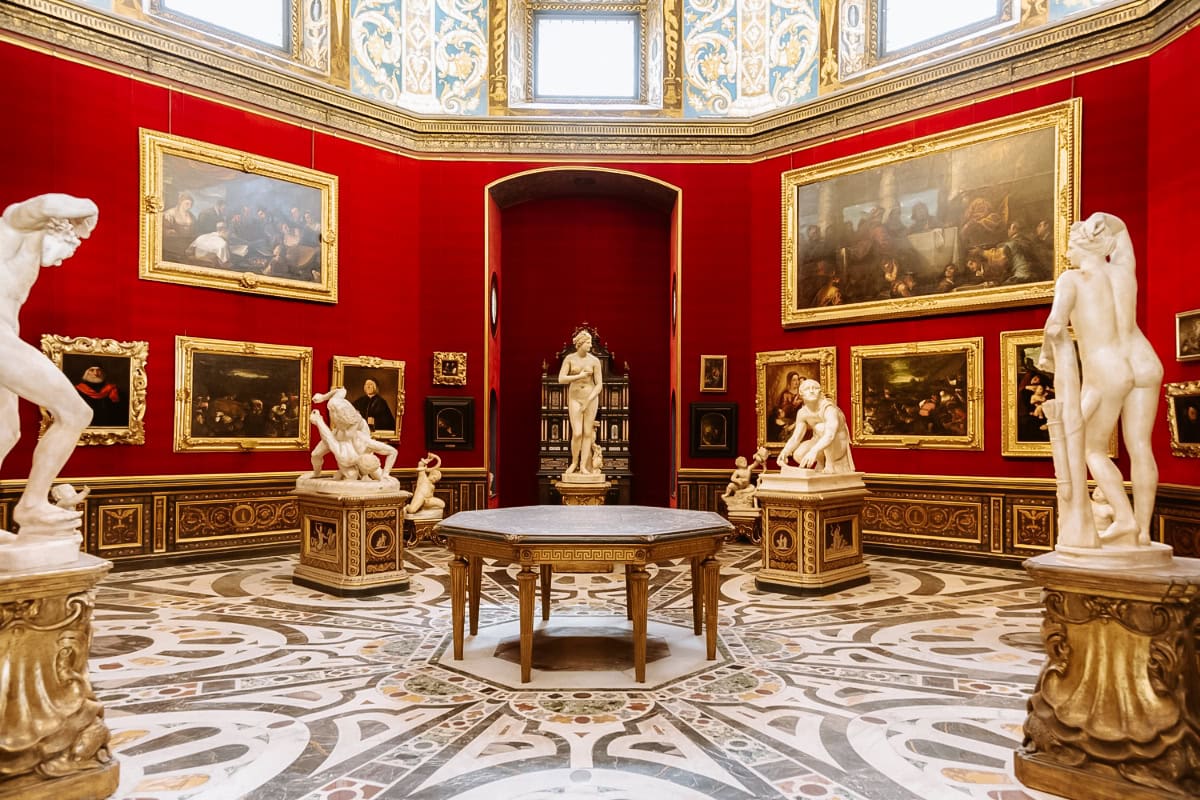
The most beautiful and important works of the Uffizi Gallery by artist:
- Botticelli – Birth of Venus, Primavera (Botticelli even has several rooms with his works, which are among the most popular in the gallery)
- Leonardo da Vinci – Annunciation, Adoration of the Magi
- Tiziano – Venus of Urbino
- Caravaggio – Medusa, Bacchus
- Raphael – Madonna of Stehlik, Portraits of Aponoli Doni and Maddalena Strozzi
- Michelangelo – Doni Tondo (Michelangelo’s only painting on canvas; Raphael and Michelangelo share a room with a magnificent showcase)
- …and many other artists including Giotto, Raphael and the Dutch painters Rembrandt and Rubens
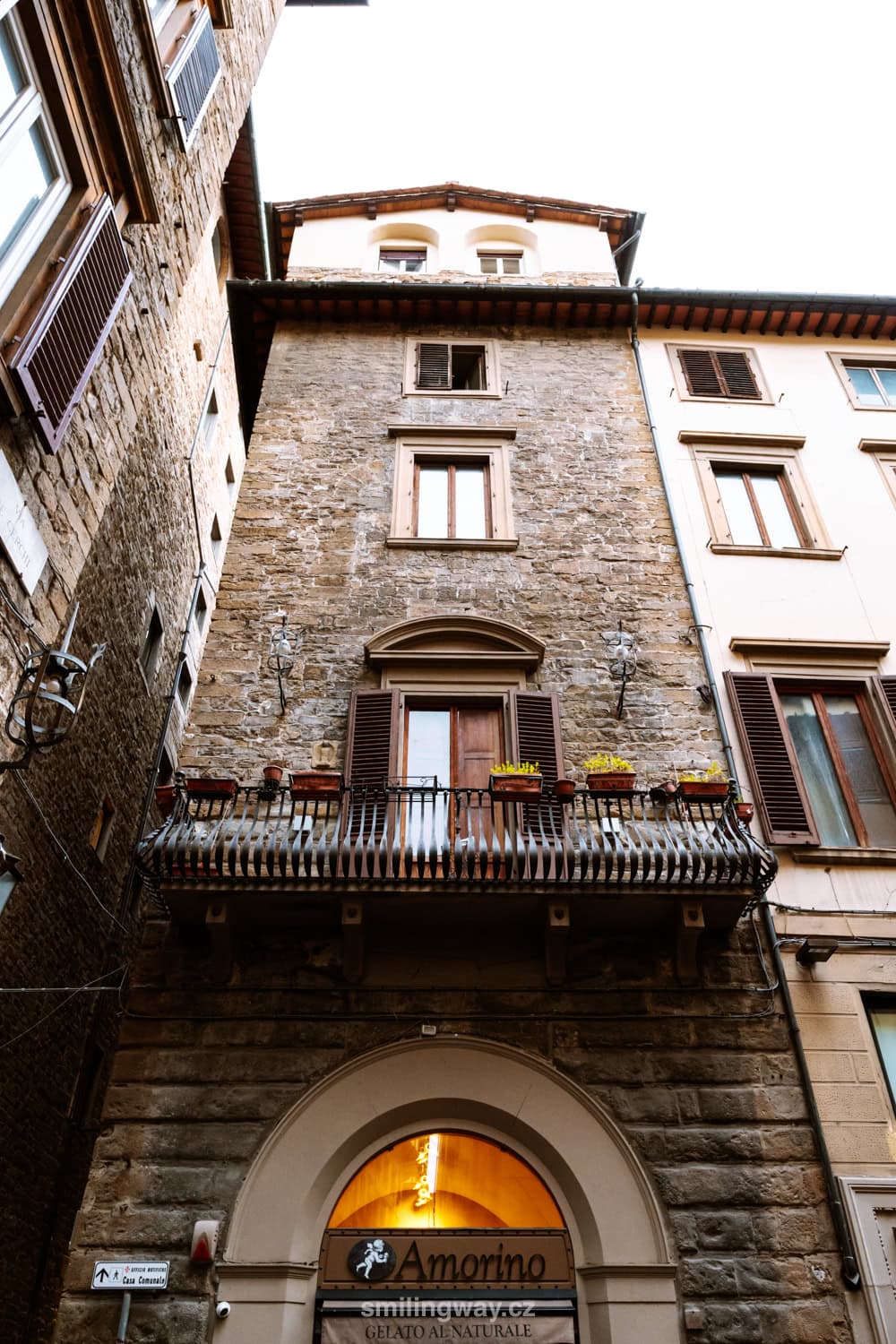
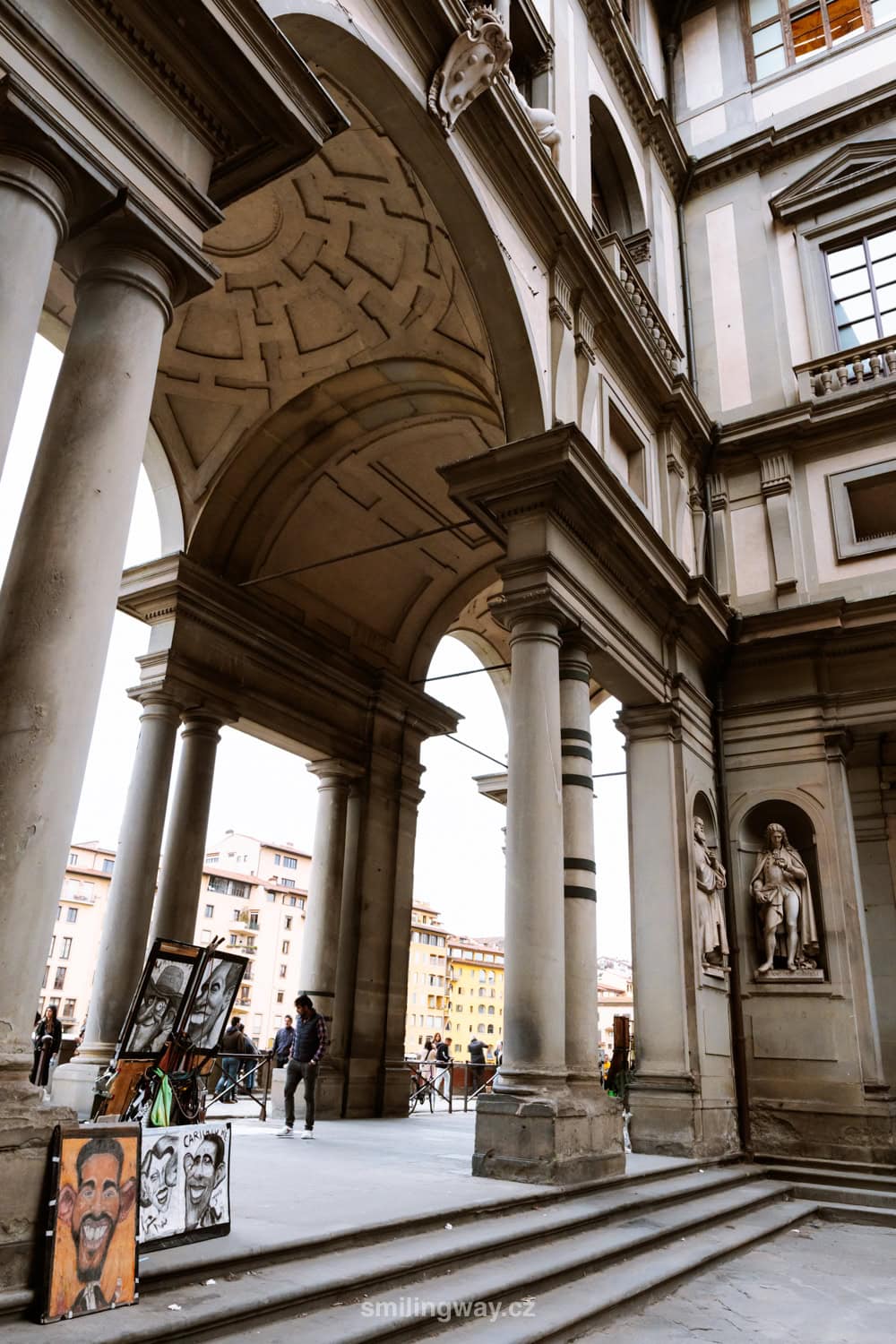
Admission and opening hours of the Uffizi Gallery
Admission to the Uffizi Gallery is €25 (+ €4 booking fee in advance), a reduced admission of €2 for young people aged 18-25 (no student required) and free admission for children under 18 and people with a Disabled Persons Card.
It is open daily except Monday at the following times: Tuesday to Sunday 8:15-18:30, Tuesday until 17th December until 22:00.
Tip: The Galleria degli Uffizi is one of the places in Florence you should definitely visit. book a ticket in advance if you want to avoid long queues.
14. Ponte Vecchio
Ponte Vecchio is the most famous bridge in Florence from the 14th century, under which the river Arno flows. It’s lined with jewellery shops, so at times you don’t even feel like you’re walking on a bridge.
From the bridge you will have a view of the Ponte Santa Trinity Bridge from 16th century. If you’d like to take a photo of the Ponte Vecchio, it’s from the Santa Trinity Bridge that you can see it in all its glory.
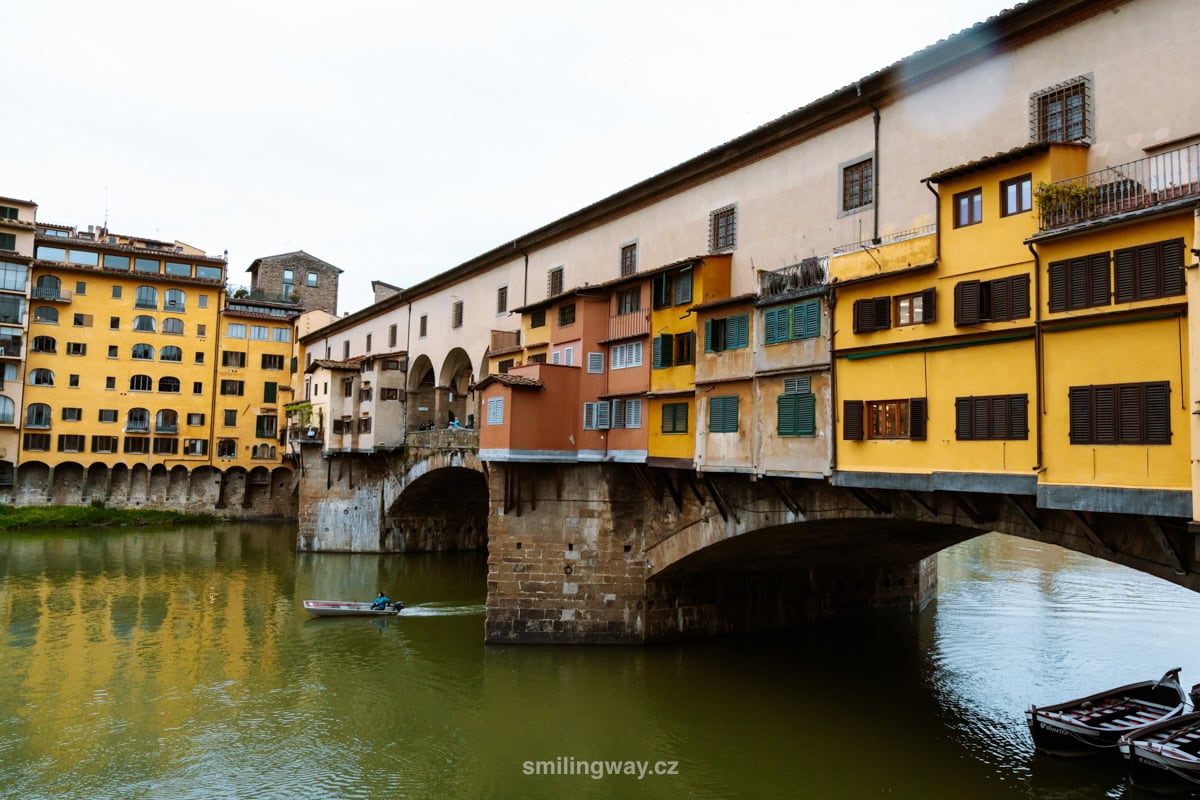
14. Santo Spirito district
The Santo Spirito district is known for its bohemian and artistic atmosphere, with well-preserved historic buildings and picturesque streets.
It has retained its traditional character and is less touristy than other parts of Florence. The heart of the district is Piazza Santo Spirito, surrounded by cafés, restaurants and shops.
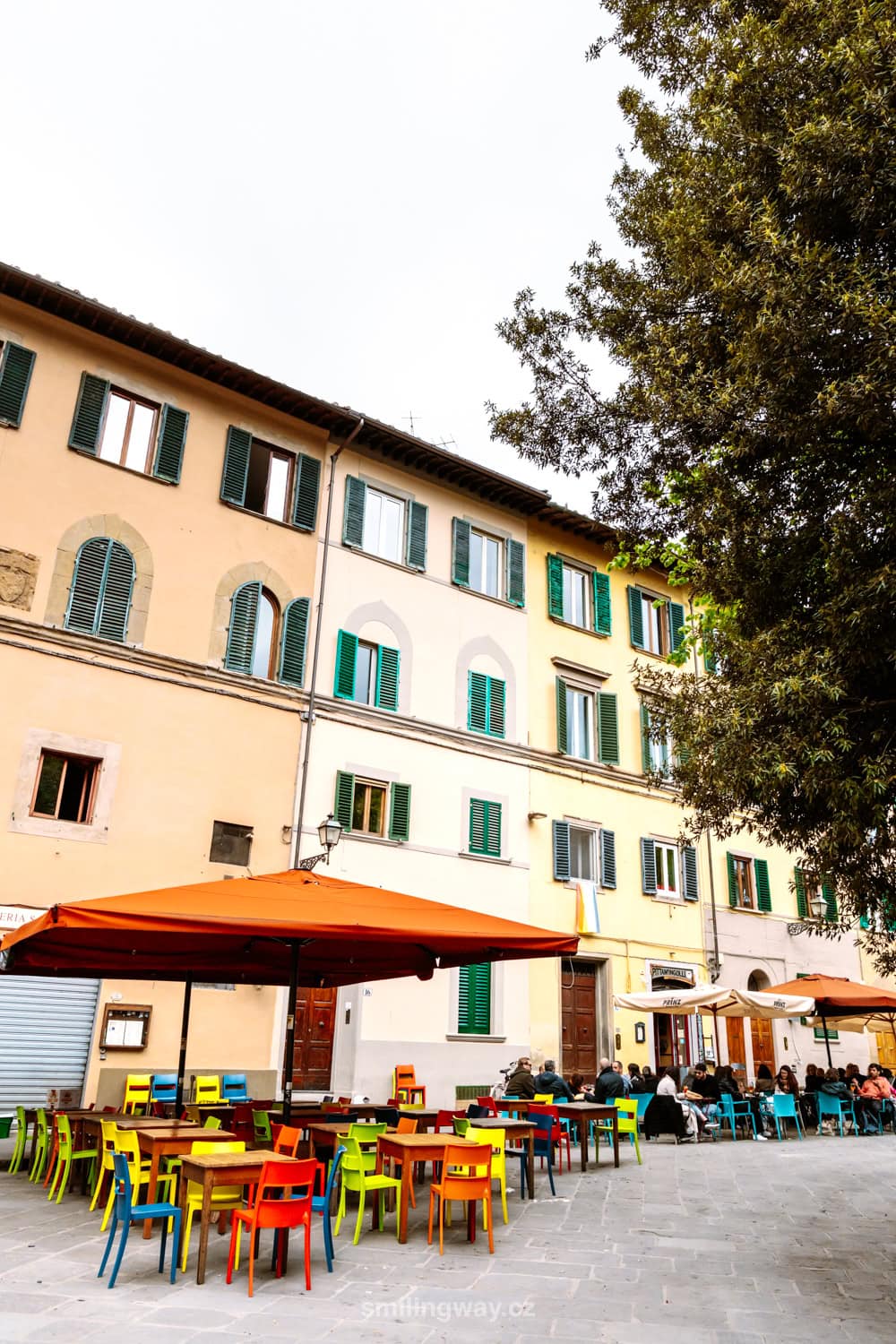
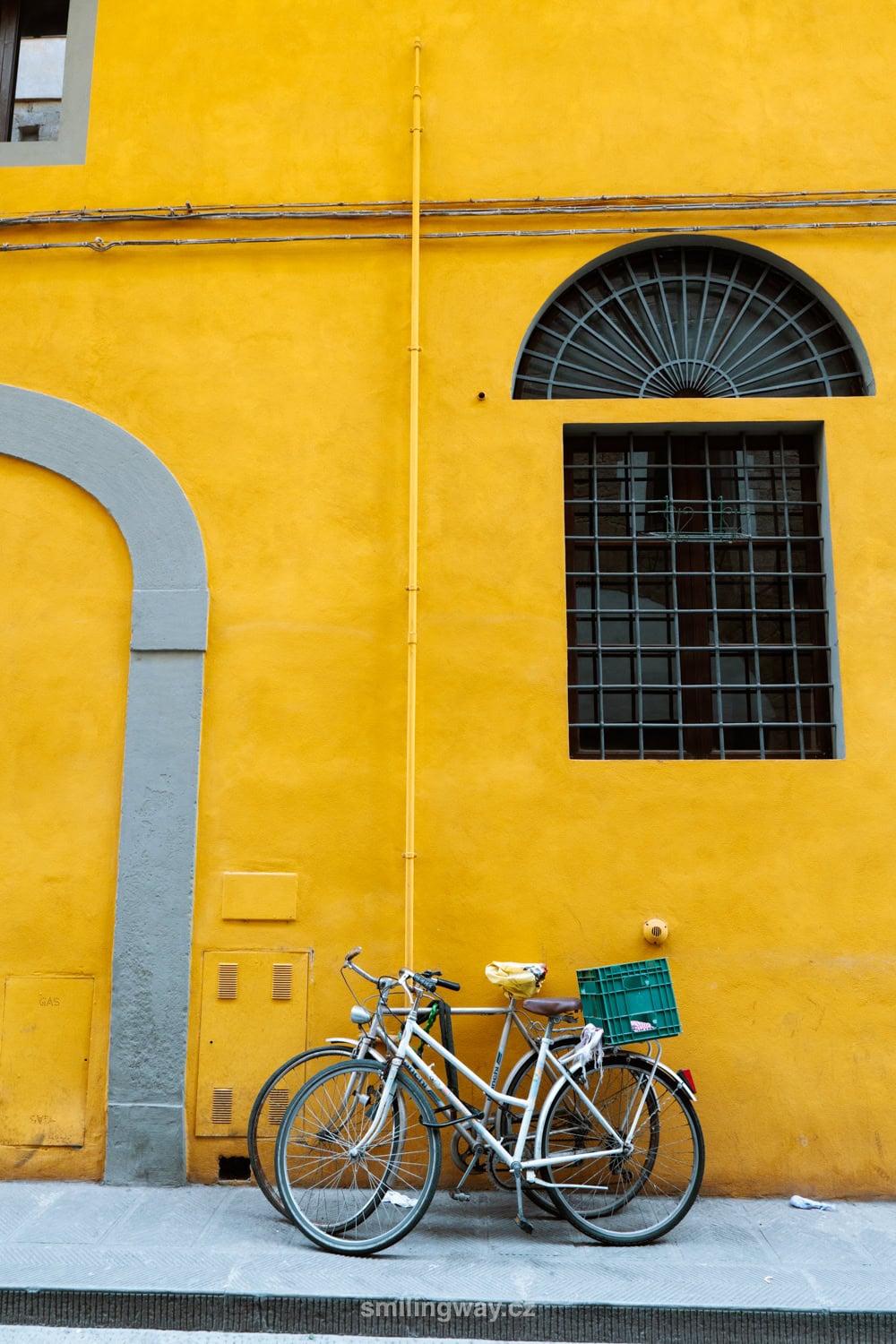
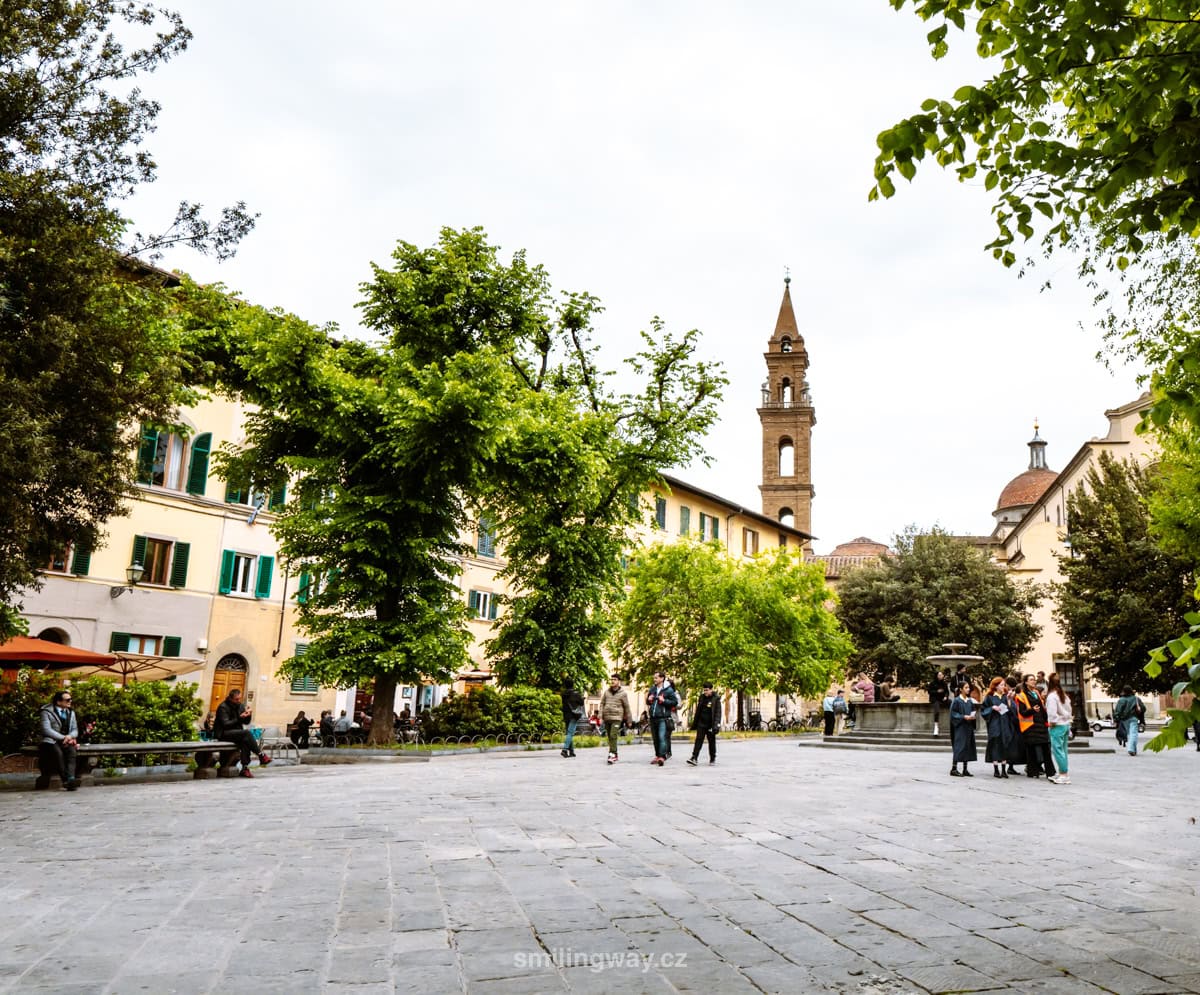
16. Basilica of Santa Croce
The Basilica of Santa Croce is not just any basilica. It is the largest Franciscan church in the world and the final resting place of Michelangelo, Galileo and other famous personalities.
There is an entrance fee, but the complex is huge – for one price you get access to the basilica, the sacristy with the Medicean chapel, Brunelleschi’s Pazzi chapel, the amphitheatres, the opera museum, the crypt and the memorial chapel.
☞ Are you planning to explore the whole of Tuscany? Here is a detailed itinerary for a 5-7 day roadtrip in Tuscany.
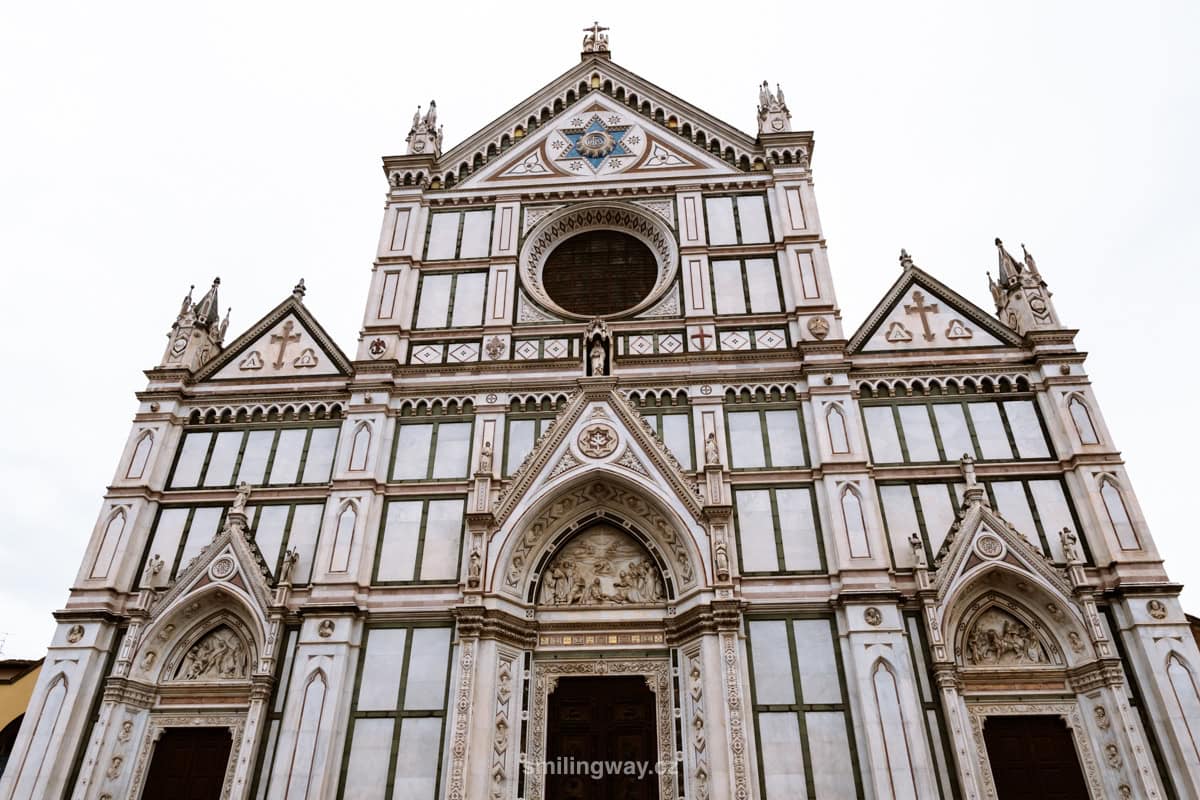
Full admission costs 8 € and reduced admission costs 6 € (children 12-17 years and students). Free admission for children under 18 accompanied by a paying parent and for persons with a Disabled Persons Card including an accompanying person.
The complex is open Monday to Saturday 9:30-17:30 and on Sundays and public holidays 12:30-17:45.
18. Church of Santa Maria Novella
The Church of Santa Maria Novella (Basilica di Santa Maria Novella) is adjacent to Santa Maria Novella Station, which is named after the church. It is a Dominican church from the 15th century with a marble facade and inside with Gothic and early Renaissance frescoes.
Michelangelo referred to the church as his fiancée. Its exterior is reminiscent of the more famous Duomo, but the interior is more ornate.
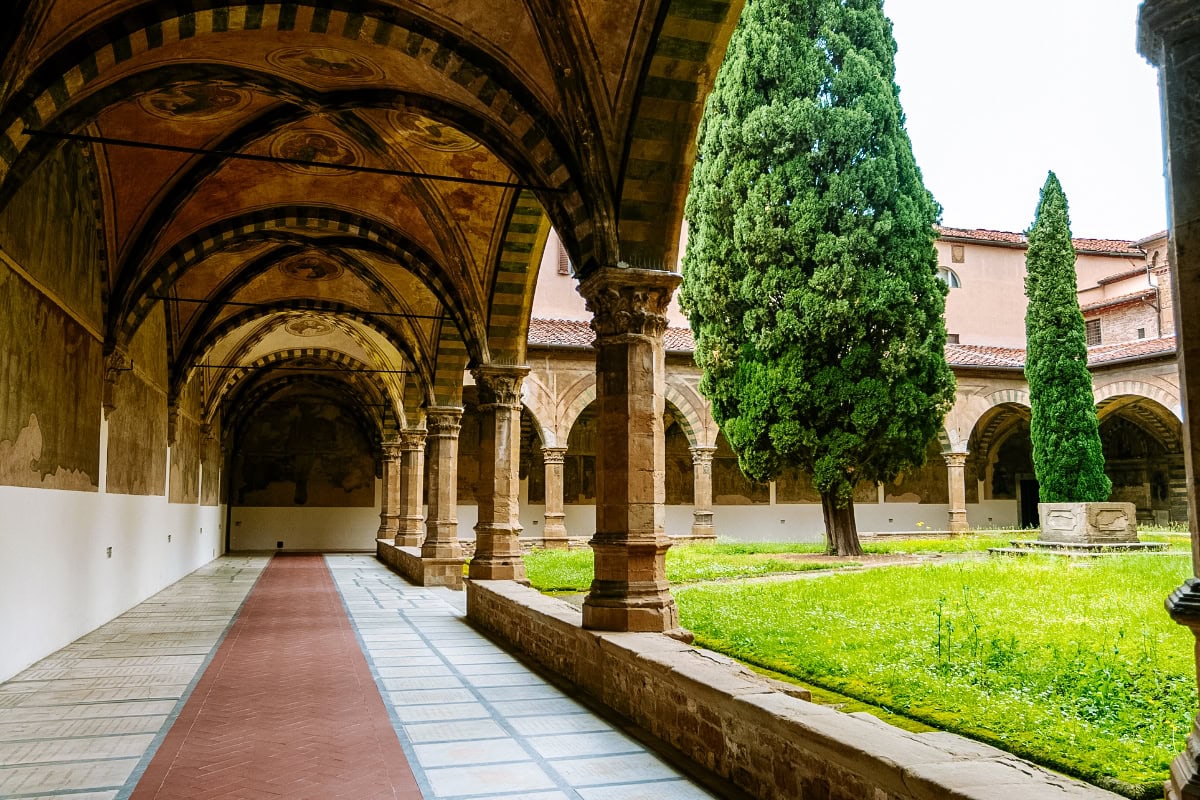
The Basilica is part of a large complex, where you will also find the Museo di Santa Maria Novella. The entrance to the basilica is from the well-kept Piazza di Santa Maria Novella, with an obelisk in the centre.
The ticket to the basilica also includes a visit to the chapels, including the frescoes, the sacristy and the Avelli cemetery. As part of the museum tour you will also see the Convent of the Dead, the Green Convent, the Cappellone degli Spagnoli, the Cappella degli Ubriarchi and the Refectory.
☞ More information: Guide to Florence.
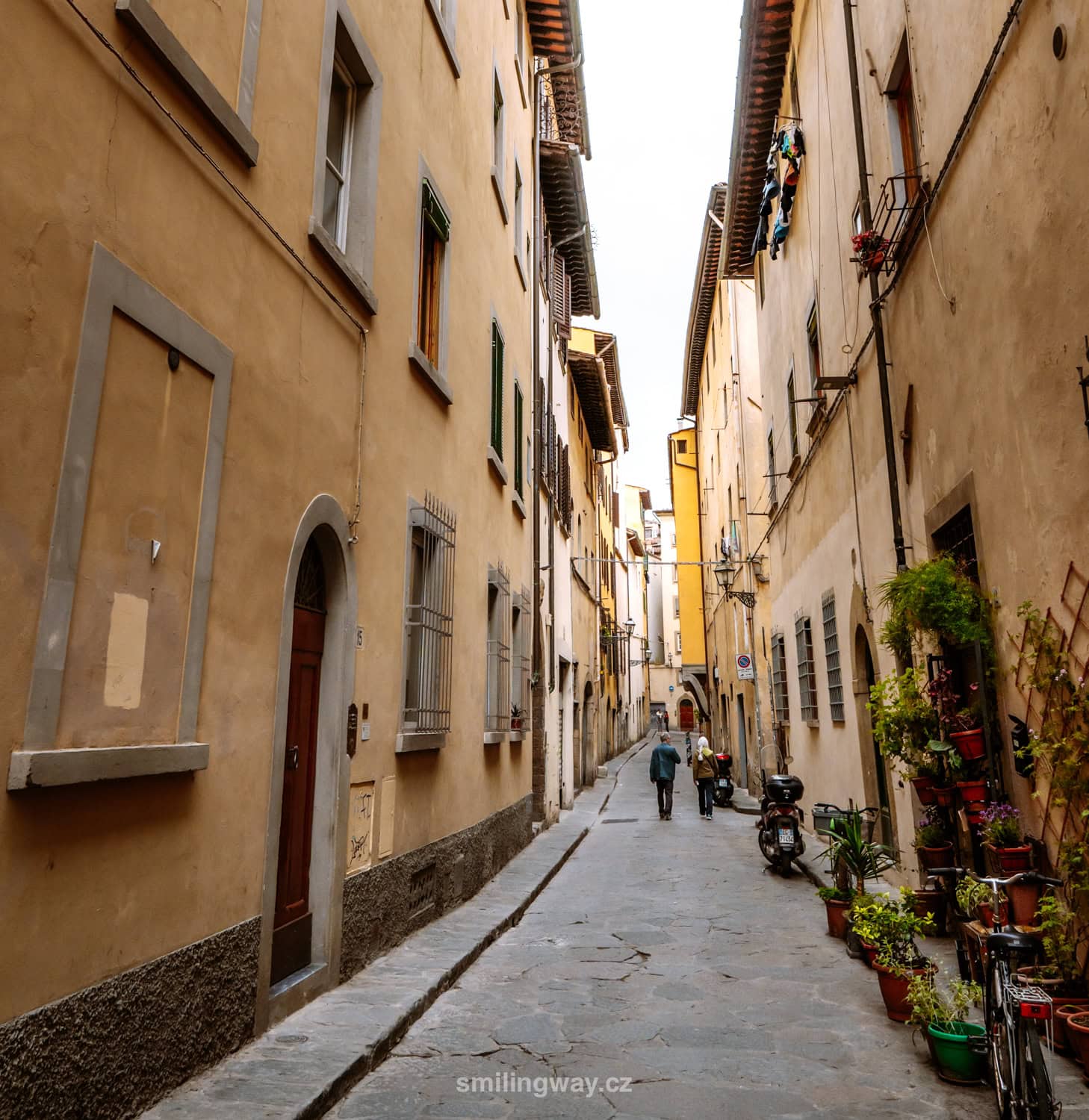
Entrance and opening hours to the Santa Maria Novella complex
Full admission is 7,50 € and reduced admission for 11-18 years is 5 €. Reservations for the basilica are not necessary, you can reserve time for the museum here . The booking fee is 1 €. Free admission for children under 11 years of age and persons with a Disabled Persons Card (including an escort, if necessary).
Opening hours vary according to the season:
- October to June: Monday-Thursday 9:00-17:30, Friday 11:00-17:30, Saturday 9:00-17:30, Sunday and holidays 13:00-17:30
- July to September: Monday-Thursday 9:00-17:30, Friday 11:00-17:30, Saturday 9:00-17:30, Sunday and holidays 12:00-17:30
Hotels Florence 😴
17. Officina Profumo – Farmaceutica di Santa Maria Novella
A short walk from the museum and the Church of Santa Maria Novella, it is said to be the oldest historic pharmacy in Europe. If you have time, take a peek here. There are often lines to get in, but they pass quickly.
The pharmacy will intoxicate you not only with its fragrance, but also with its handmade products and its beautiful interior with frescoes and a small museum.
It is open daily from 9:30-20:00.
☞ More information: The most beautiful places in Tuscany (complete guide and map).
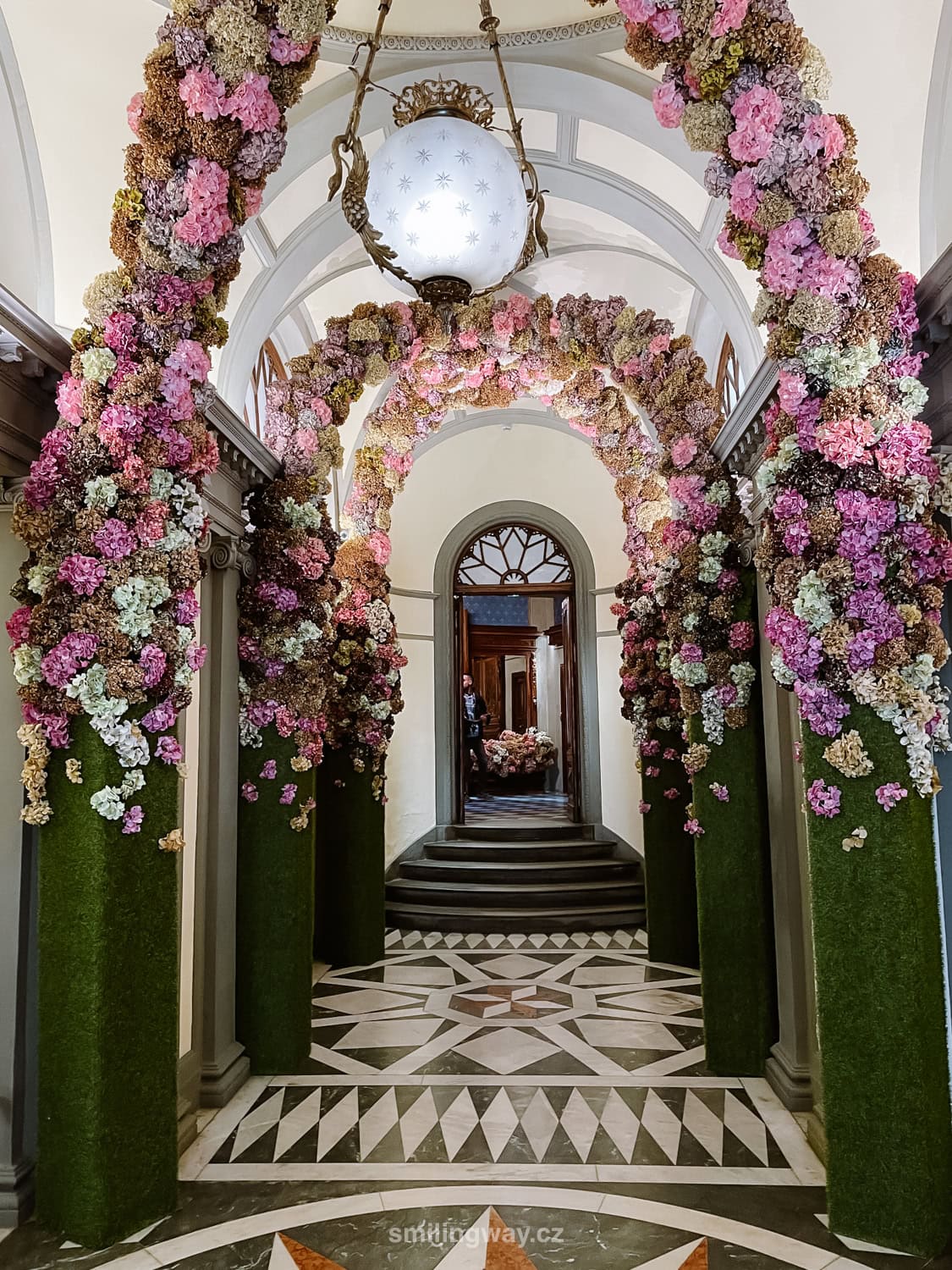
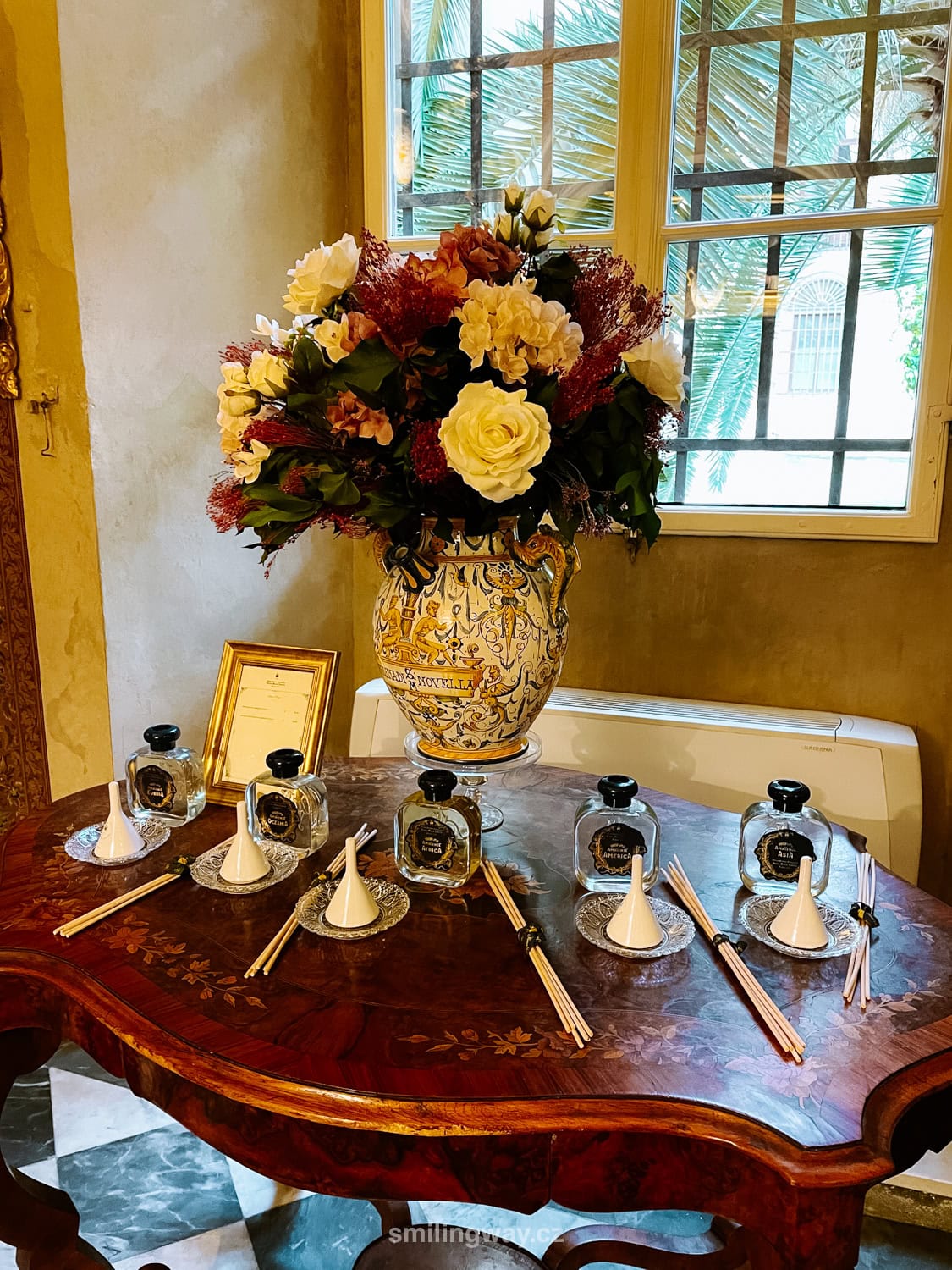
18. Bardini Gardens
The Bardini Gardens are beautiful gardens to the south of the river, offering views of the city, including the Duomo, thanks to their hilltop location.
The best time to visit is April, when the pergola is literally covered with purple wisteria flowers.

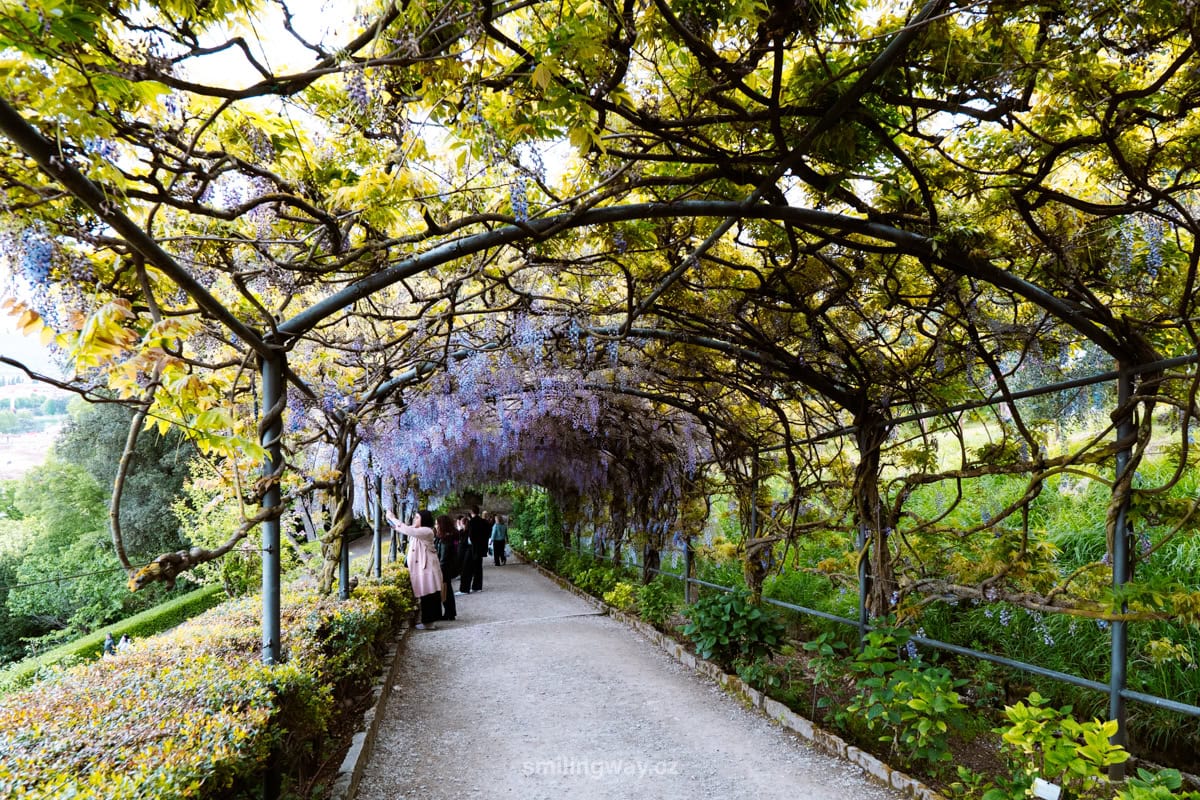
The ticket to the Bardini Gardens also includes the Boboli Gardens (more info in a moment). Combined admission is €10, reduced admission is €2 for young EHS under 25. Children up to 18 years of age and persons with a Disabled Persons Card are admitted free of charge. On the first Sunday of every month, everyone, regardless of age, is admitted free of charge.
☞ Visit the Bardini Gardens and the Boboli Gardens.
The gardens are open daily except Mondays from 10:00-19:30.
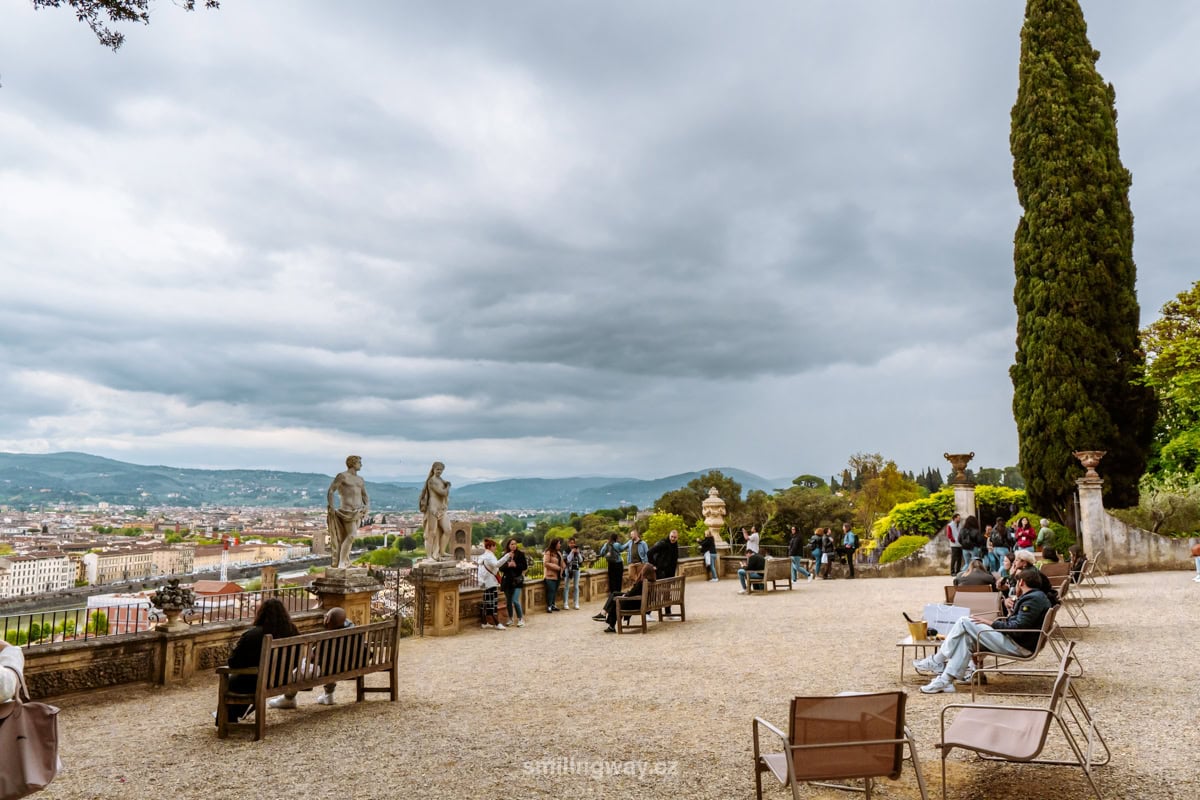
21. Pitti Palace and Boboli Gardens
The Renaissance Pitti Palace (Palazzo Pitti) is the largest palace in Florence, situated at the foot of the Boboli hill. It was built in 15th century and served as the royal home for the Medici family.
Inside, you’ll find several galleries and museums that are divided by theme – the Grand Dukes’ Treasury on the ground floor, the Palatine Gallery (Titian, Raphael, Rubens and others) and the Imperial and Royal Apartments on the palace’s posh first floor, the Gallery of Modern Art and the Fashion and Costume Museum on the second floor.
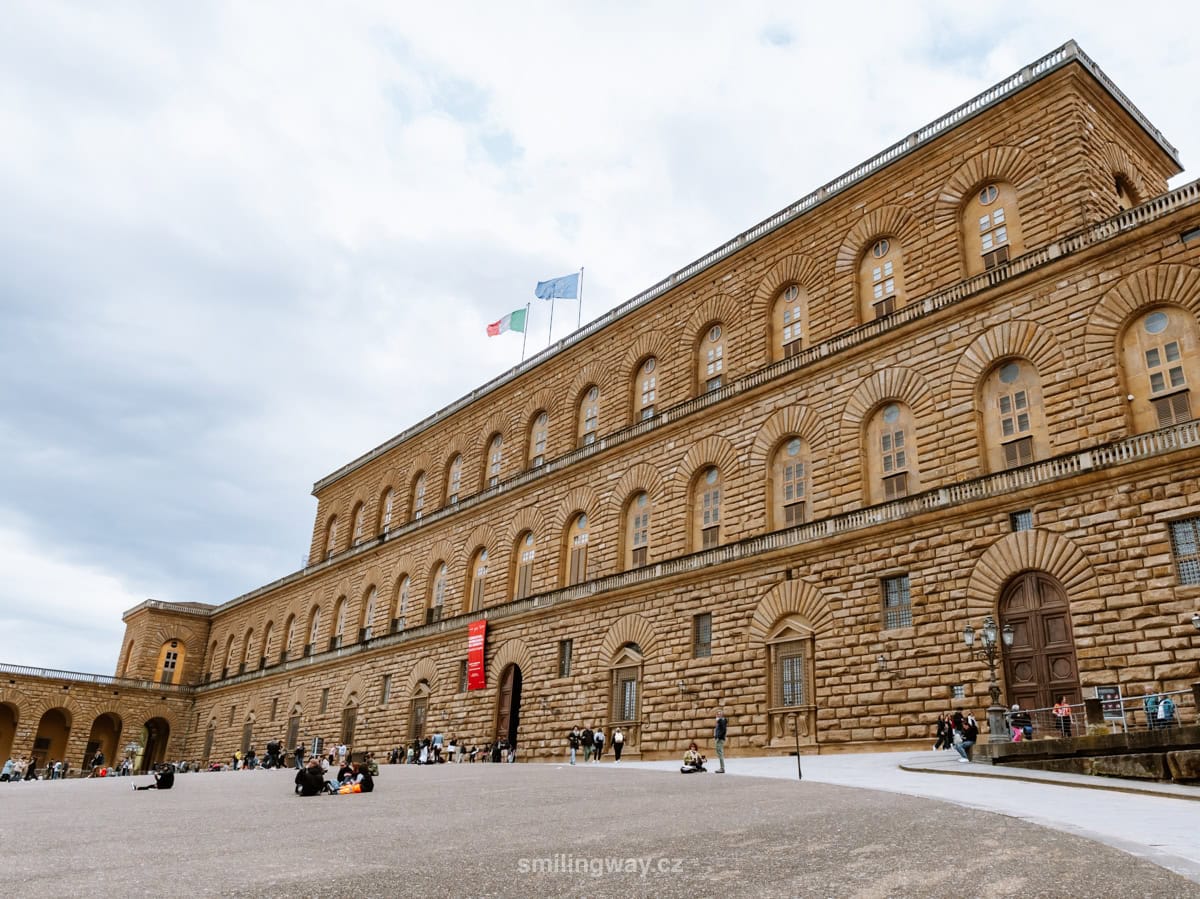
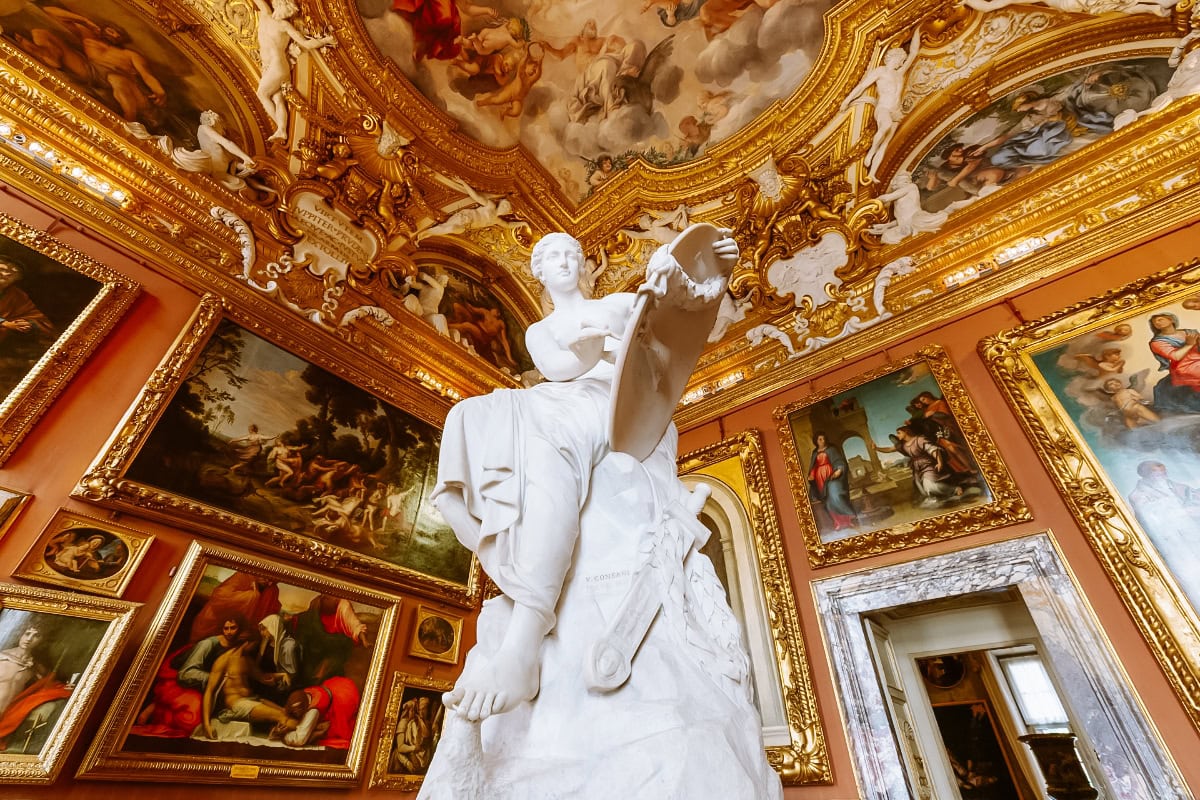
Right next to Palazzo Pitti is the largest green space in Florence – the Italian-style Boboli Gardens (Giordino di Boboli) with Renaissance statues, fountains and beautiful views of the city. Don’t expect Versailles-style gardens – rather, it’s a sprawling forest park that’s interspersed with attractions. At present (2024), extensive reconstruction is underway, with a number of sites taped off.
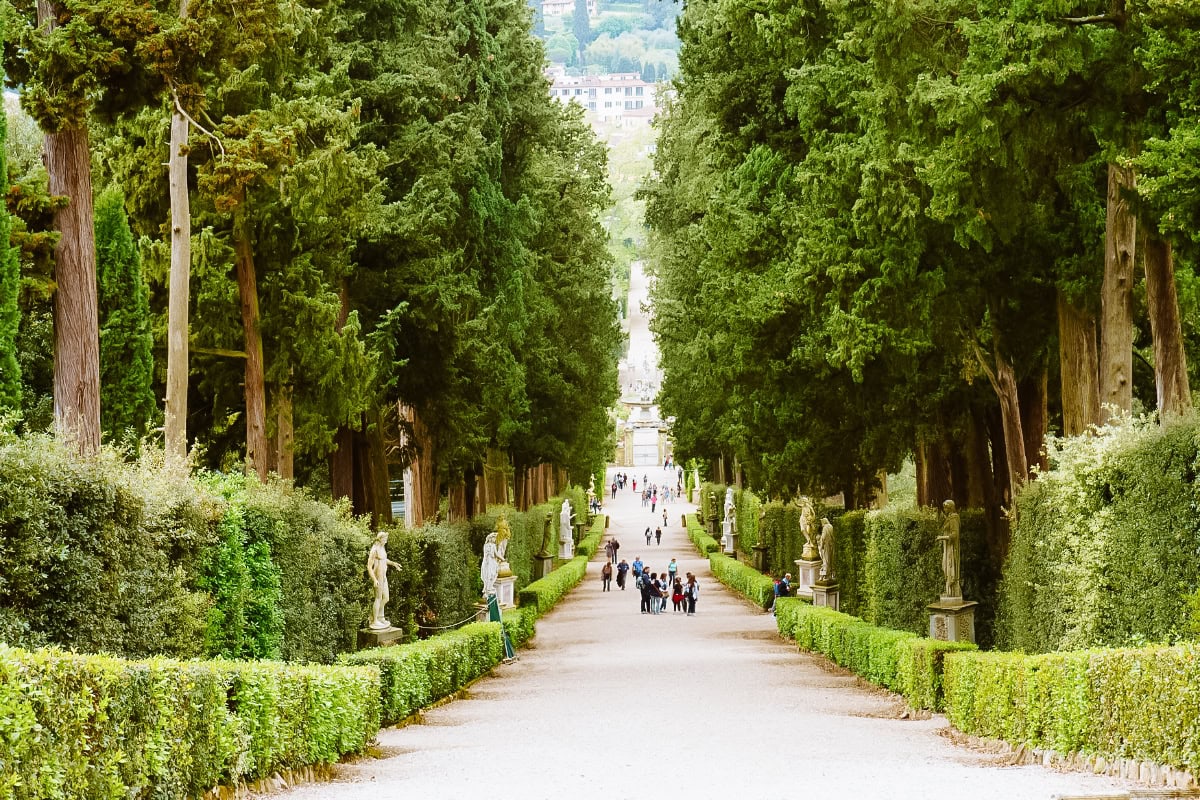
Part of Tickets to Palazzo Pitti is the Palatine Gallery, the Gallery of Modern Art and the Grand Ducal Treasury. In high season and on weekends and holidays, it may sell out in advance.
The palace is open daily except Mondays from 8:15-18:30 (last entry at 17:30).
The Boboli Gardens also include the Bardini Gardens, which are nearby. We’ll talk more about them in a little while. Visit the Boboli Gardens and the Bardini Gardens.
22. Piazzale Michelangelo
Where can you experience one of the best views of Florence? The Piazzale Michelangelo, a hilltop lookout, offers a great view of the city. In the centre of the square stands a bronze replica of Michelangelo’s statue of David.
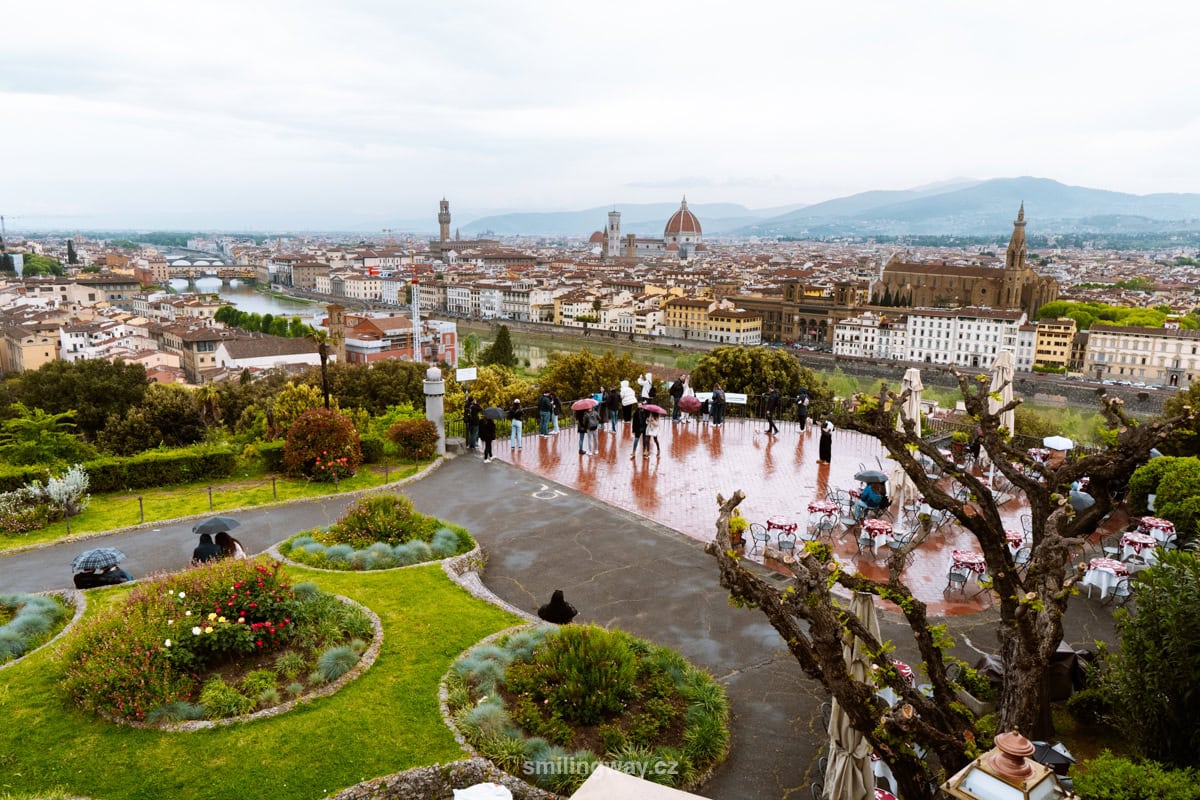
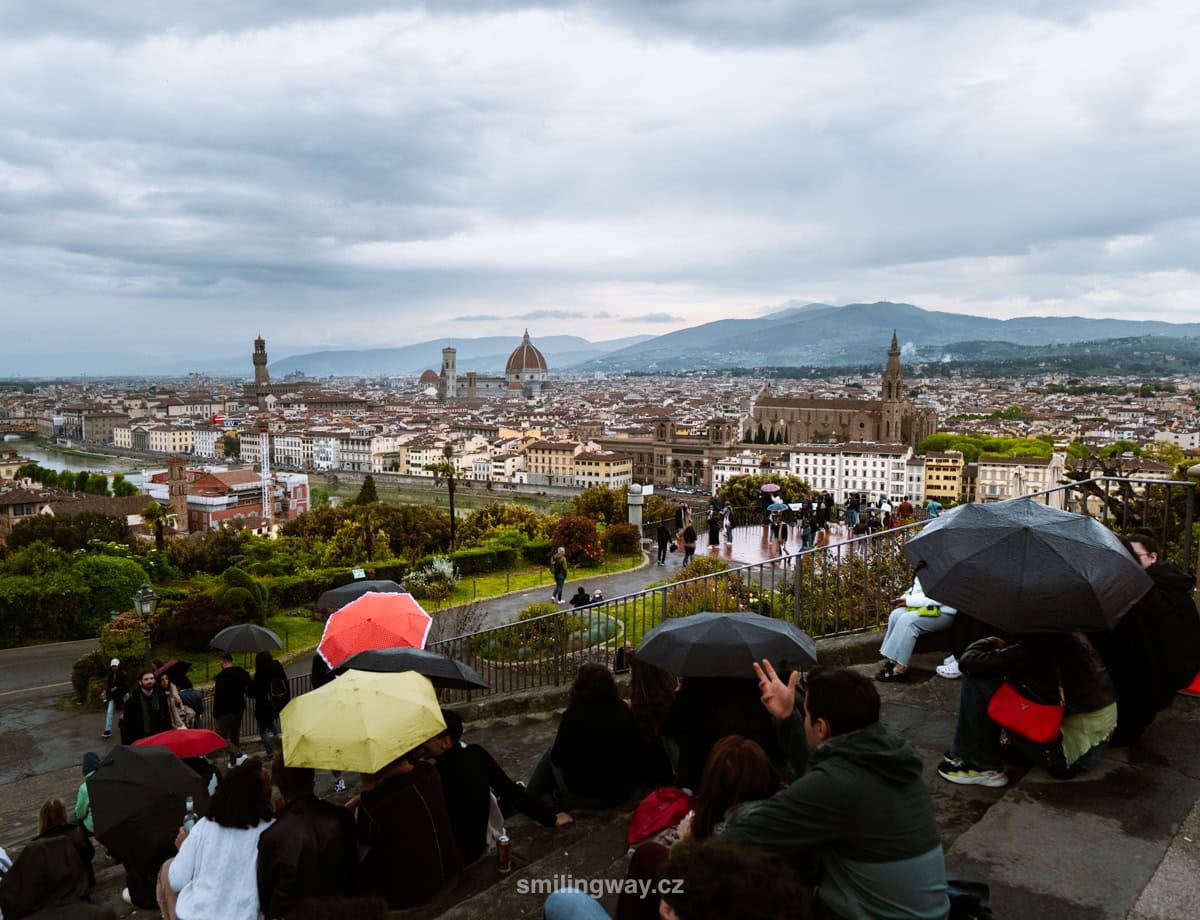
You know what’s special about the Florence skyline? The houses are uniform in height and only a few buildings stand out – the Duomo, the Vecchio Palace and the Basilica of Santa Croce. How is that possible? For many years, the city has forbidden the construction of buildings taller than the red dome of the Duomo.
On the way to Piazzale Michelangelo, you’ll pass the remains of Florence’s 14th-century fortifications.
21. Giardino delle Rose
Take a short detour on the way to Piazzale Michelangelo and you’ll reach the Giardino delle Rose – a beautiful garden full of flowers, benches and views. A very nice place to escape the crowds that Florence is famous for.
The garden is free of charge. It is open daily from 9:00-20:00, on Sundays from 10:00.
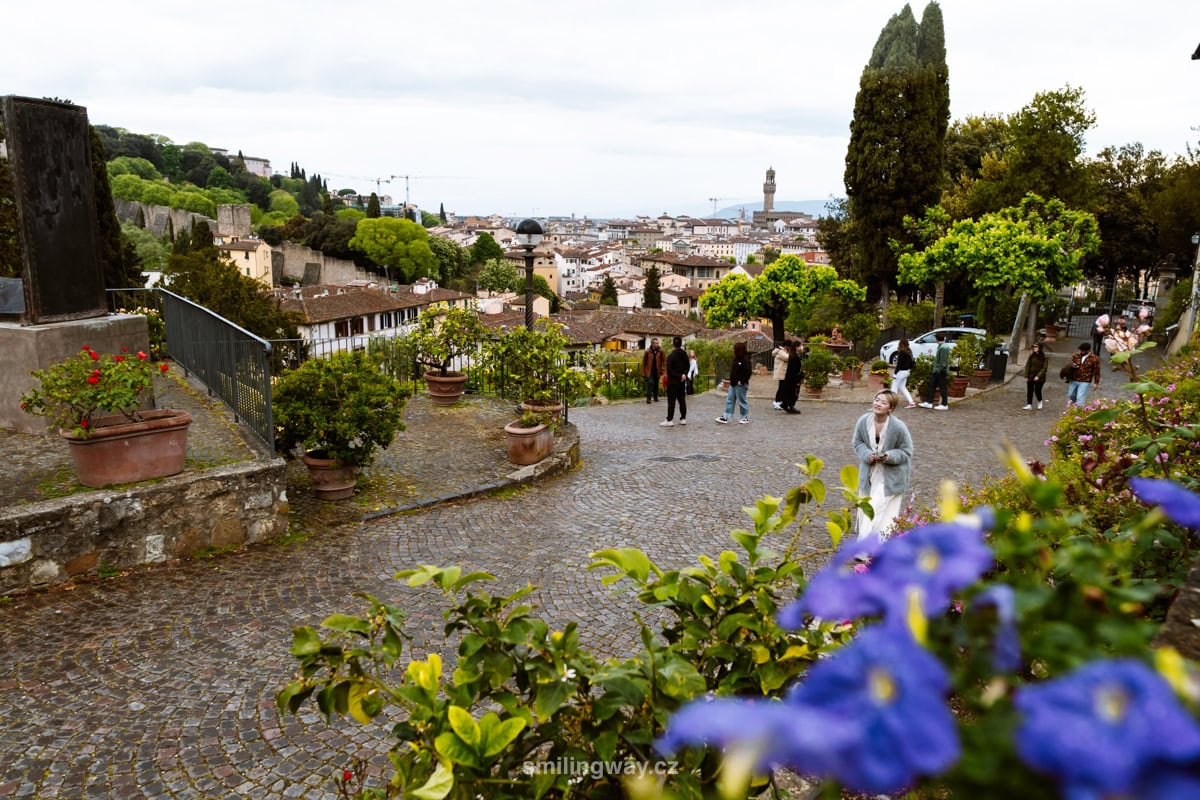
23. Church of San Miniato al Monte
If you climb a little higher from Piazzale Michelangelo, you’ll reach the Romanesque church of San Miniato, which stands right at the top of the hill. Together with the Baptistery of John the Baptist, it is one of the oldest buildings in Florence.
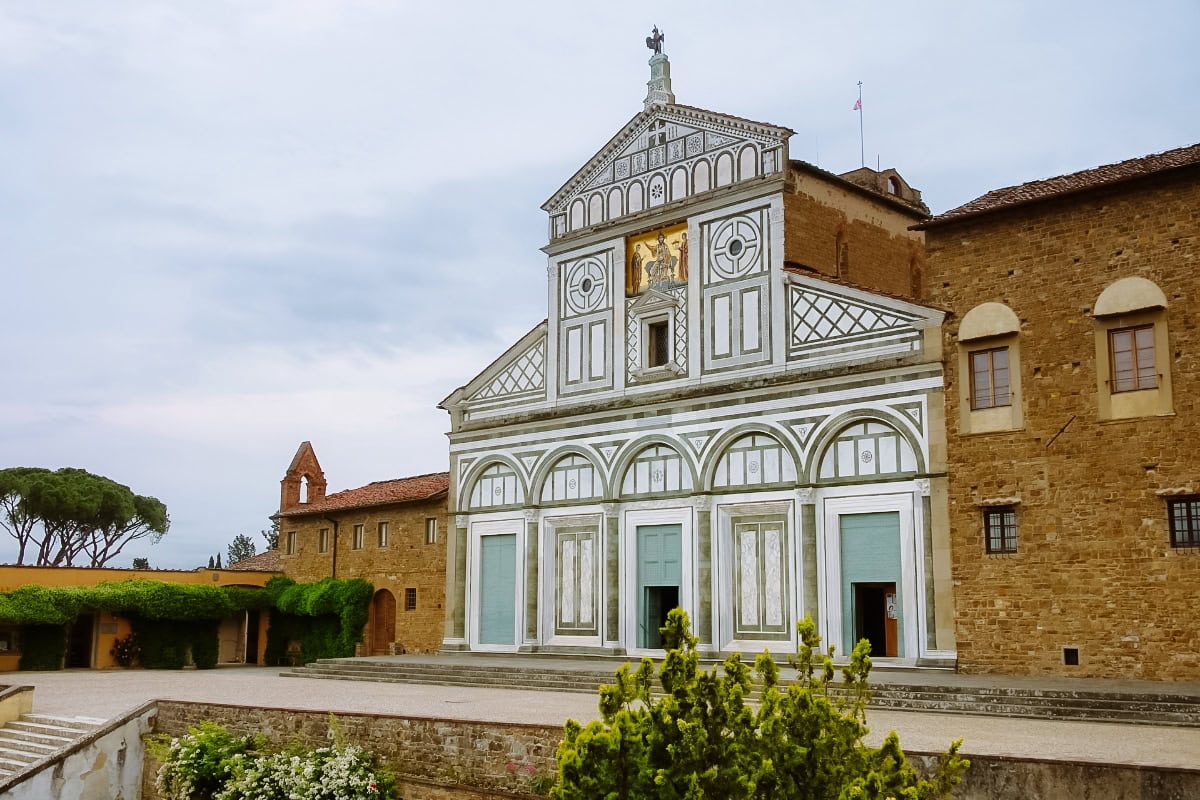
Admire the marble façade and frescoes in the interior, as well as the view of Florence from here.
The church is open free of charge from 9:30-13:00 and 15:30-19:00.
Where to stay in Florence
- hu Firenze Camping in Town: Accommodation in bungalows with bathroom and free parking, great price and access to the centre
- Art Hotel Museo: Modern 4* hotel with swimming pool on the outskirts of Florence
- c-hotels Diplomat: Stylish hotel with excellent accessibility minutes from the train station and the city centre
- Plus Florence: Comfortable accommodation in private or shared rooms, swimming pool, fitness, roof terrace
Hotels Florence 😴
Florence map
HOW TO USE THIS MAP: Above you will find a detailed map with tips on sights and attractions to visit in Florence. Click at the top left of the map to see separate layers with highlighted locations. You can hide and show the different layers or click on the icons on the map to see the names of the places I mention in my guide to Florence, Italy. If you want to save the map, star it. For a larger version, click on the icon in the upper right corner.
The best booking resources for visiting Florence
Via Booking.com we search for all accommodation. It is the largest accommodation portal in the world and you will find everything from modern hotels, cosy guesthouses to seaside villas.
Get Your Guide is a huge booking system for buying tickets, guided tours and all sorts of activities. In one place you can read other travellers’ experiences and book tickets to the Vatican Museums, a cruise on the Danube or a desert safari in Dubai.
If you are planning to rent a car in Tuscany, the best experience we have with Rentalcars.comwhich has the widest range at good prices. Insurance and free cancellation is included.
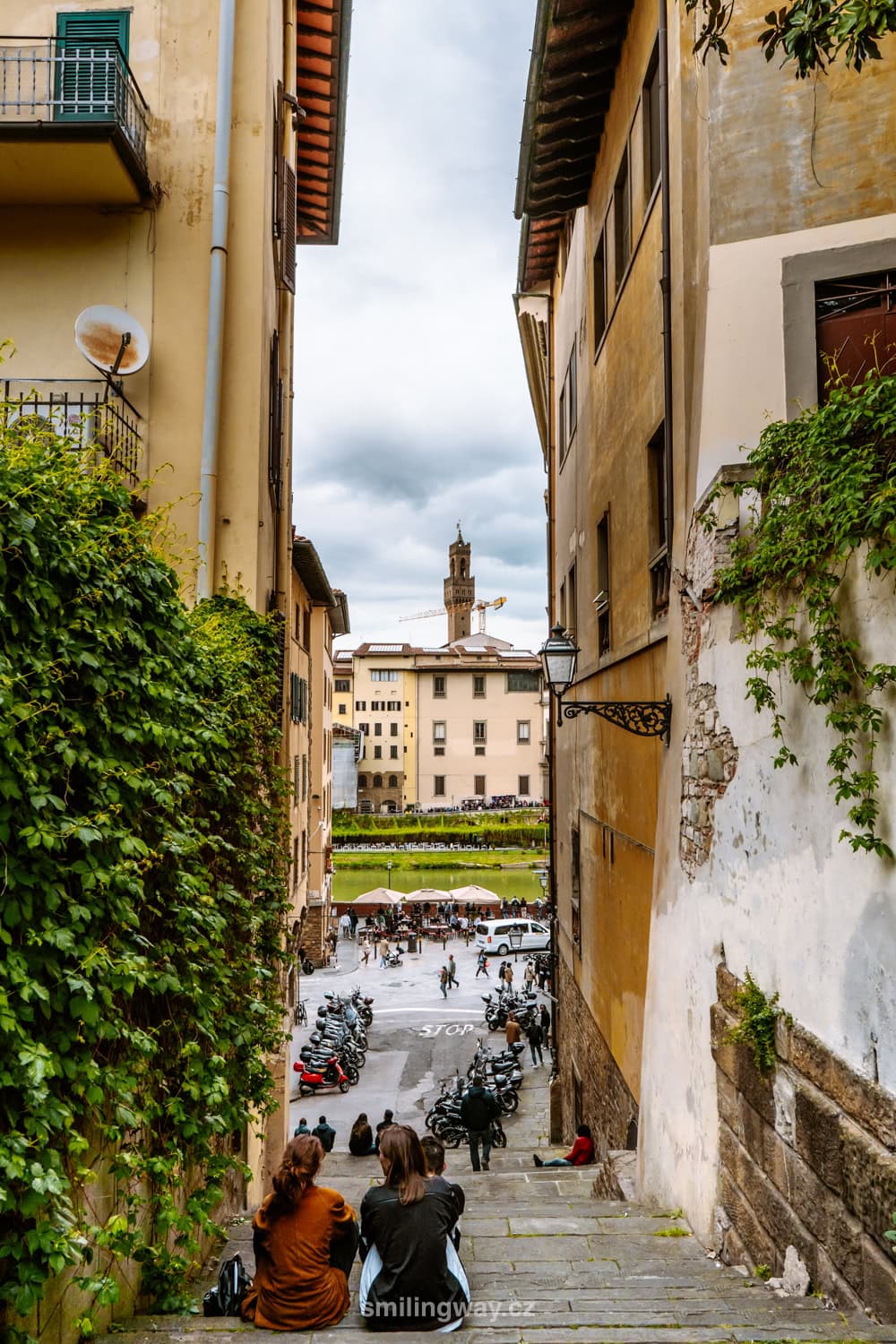
These were our picks for the best places to visit in Florence. Do you have a question? We’ll be happy to answer it in the comments below. Have a safe journey!
Plan your trip quickly and easily. If you buy something through our links, we get a small commission. You pay nothing extra. Thank you!
More information about Italy
TUSCANY: Check out our detailed guide to Florence. We have created an itinerary for 2 days in Florence (including a map and useful information). Here are the best places to visit in Pisa.
Are you planning to explore the whole of Tuscany? We’ve put together our tips for what to see in Tuscany, including a map. Here is a detailed itinerary for a 5-7 day roadtrip in Tuscany.
ROME: Here’s a list of the most beautiful places in Rome. We have also created a detailed itinerary for 3 days in Rome.
NORTHERN ITALY: Here is the itinerary and route map for 2 days in Venice. See the most beautiful places to visit in Verona. Or enjoy a wonderful holiday at Lago di Garda. Get inspired with tips on sights and attractions to visit in Bologna.
ITALY: Get inspired by the most beautiful places in Italy.
Read even more tips on travelling in Italy.
Summary: Things to do in Florence
The most beautiful sights to see in Florence include the Cathedral of Santa Maria del Fiore with its adjacent bell tower and baptistery, Piazza della Signoria with Palazzo Vecchio, the Uffizi Gallery, Ponte Vecchio and Piazzale Michelangelo. Florence is like a gallery of beautiful places with lots of other attractions worth visiting. In the article we have written down all the information including entrance fees and a map.
Florence (Firenze) is a romantic and lively city. A city of culture, history and the emergence of the modern era.
The whole of Florence is literally an art museum and you don’t know where to look first. It is one of the most beautiful cities we have ever visited. And it’s not just us, because the whole centre of Florence is a UNESCO World Heritage Site.
Florence is the capital of Tuscany and the gateway to endless vineyards, among which are scattered medieval towns. Siena, San Gimignano, Lucca or Pisa are all easily accessible from Florence.
